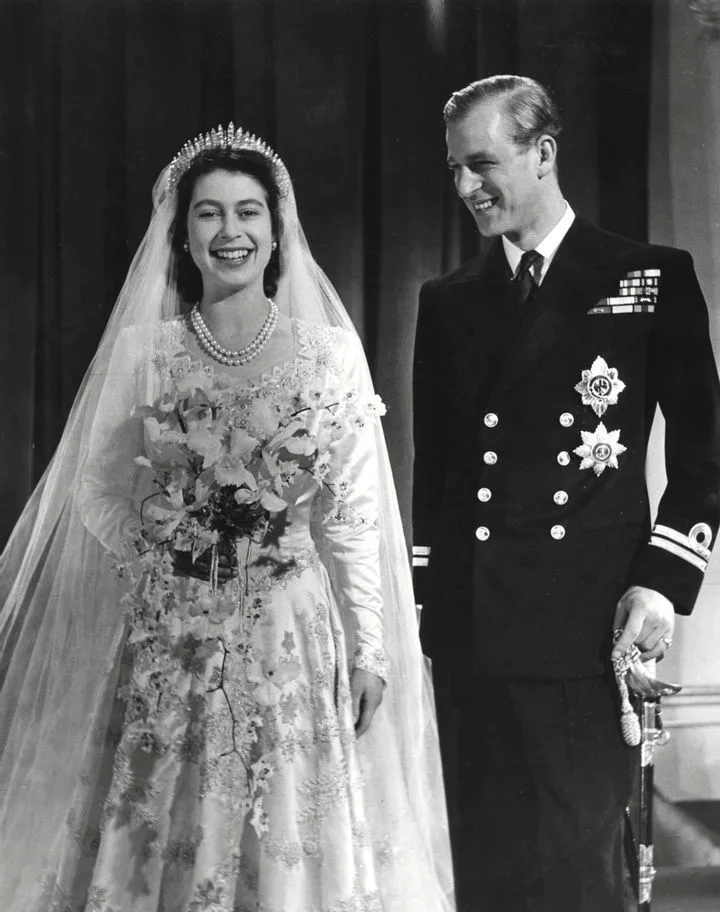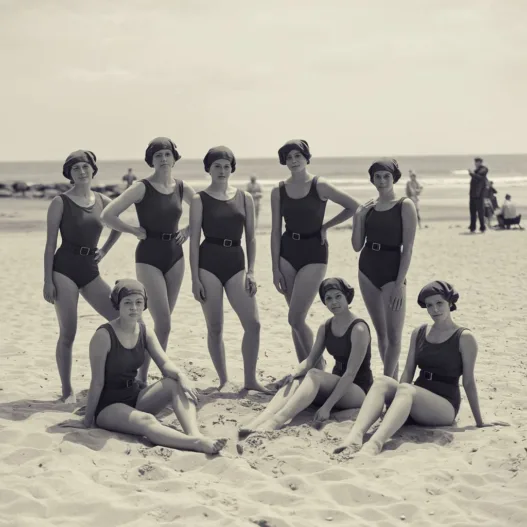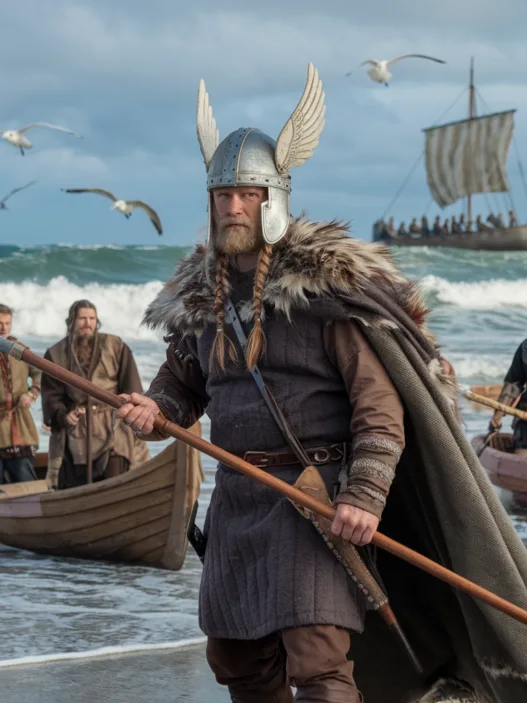We all enjoy seeing glimpses into bygone times of history and imagining what life would have been like during those golden ages. Thanks to the power of photography, we still have photographs and snippets of some of history’s most iconic moments—and there is always so much to learn from history lessons and recollections.
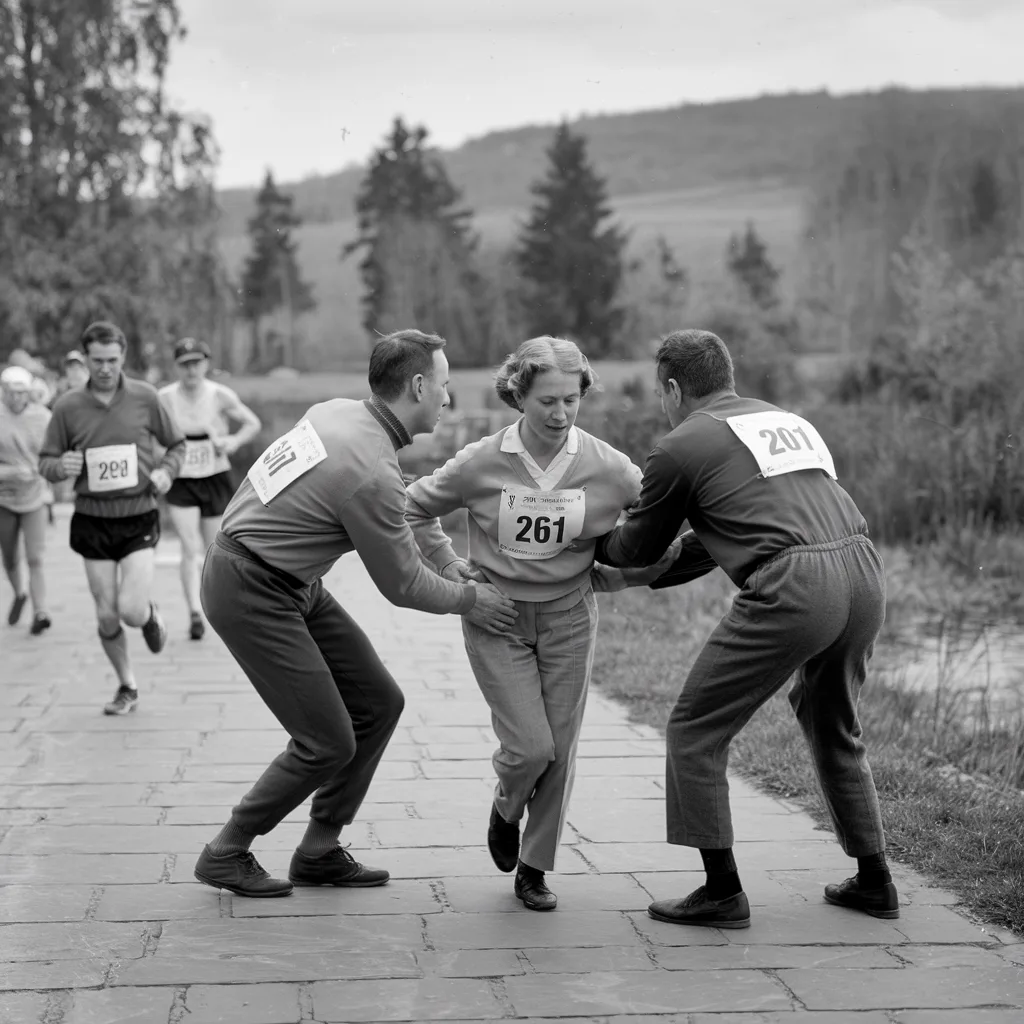
But now and then, you come across a photograph from the past that shocks and surprises you—because it simply does not make sense in today’s environment. Let’s look at some of the most incredible images from the past that you’ll never see today.
Floating House, 1920
We know what you’re thinking. Is this a scene from the legendary film The Wizard of Oz? But, no! This is a real-life image of an actual event. During a particularly large flood in 1920, this house slid down the embankment and into the water.
We’re not sure how this happened, but perhaps houses built back then didn’t have as strong foundations to keep them rooted in place in the event of severe weather.
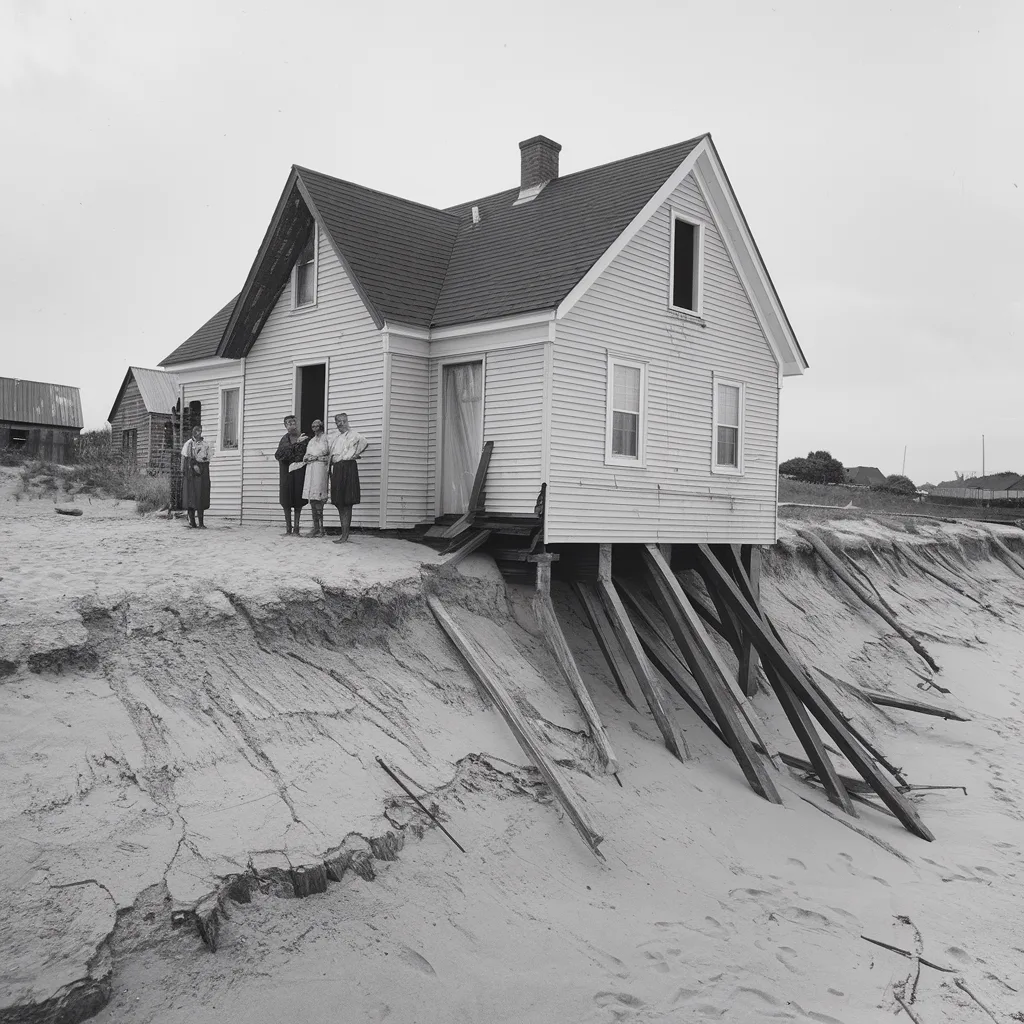
Whatever happened, it makes for a stunning photograph.
Snowball Fight, 1893
With welts and swellings of such magnitude, you might think these three boys were forced to take a photo after taking quite a beating. Well, they did—just not the kind you’d expect.
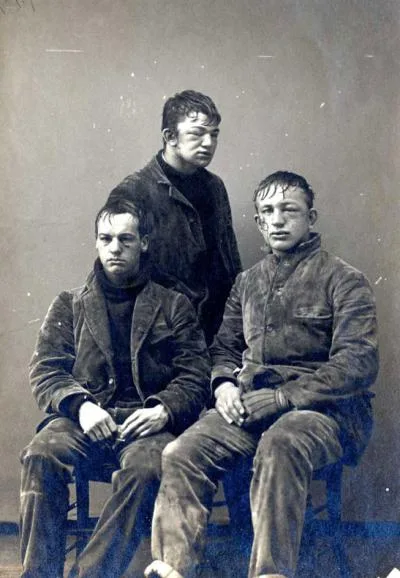
These three freshmen boys were involved in a heated snowball fight at Princeton University in the 1890s. With sophomores determined to show the freshmen males their place, it’s safe to say they didn’t take it easy on the winter game everyone enjoys.
The Mattress
People used to get into a lot of trouble back then. Whether it was one of these gorgeous ladies’ time of the month or they had just given birth, this snapshot of a group of women holding up a mattress covered with an unidentifiable stain will live on in our memories.
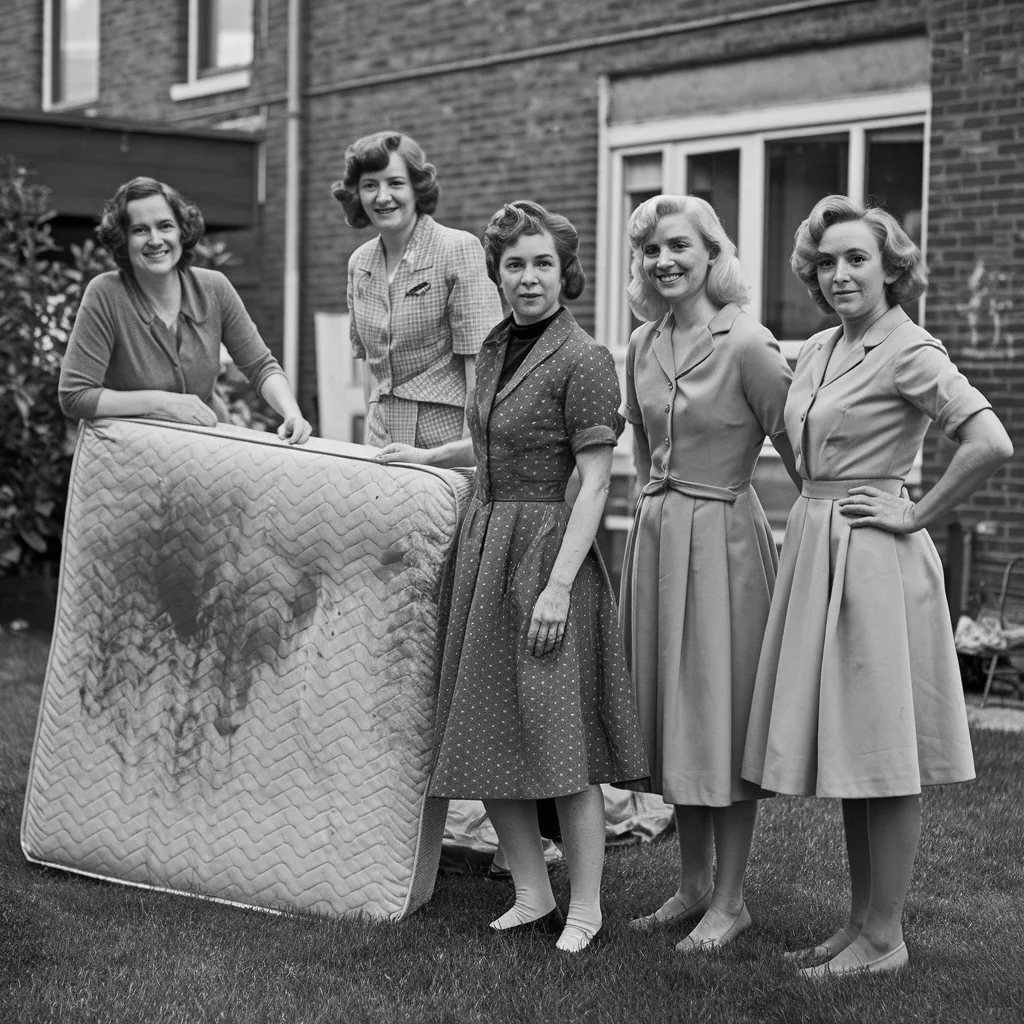
Fortunately, it’s preserved in black and white. We wish we knew the backstory of this fascinating photograph.
Billy Rose’s “Aquabelles”, 1939
Billy Rose, a theatrical showman, was a legendary fixture of the New York entertainment industry for decades spanning World War II, and in 1939, he performed one of his most successful and famous acts, a fashion parade featuring his “Aquabelles”.
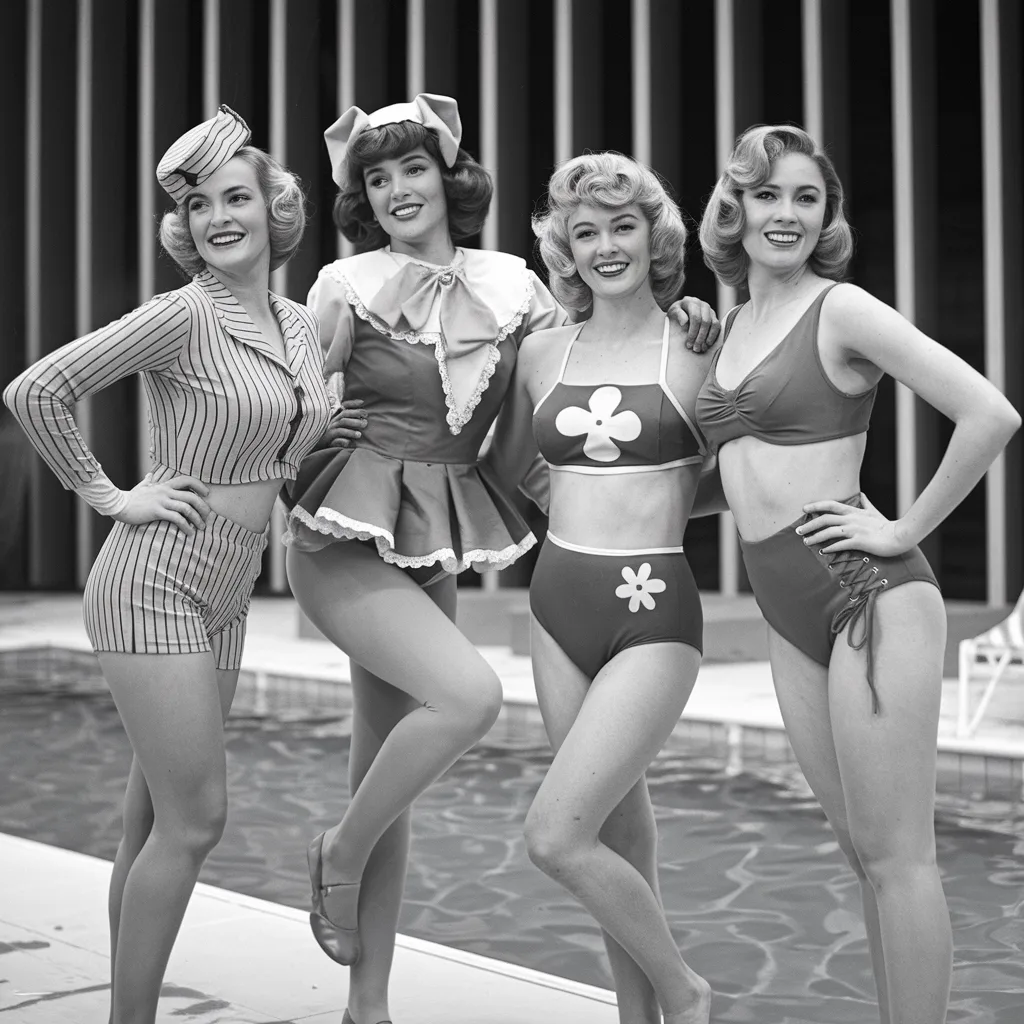
Here, the Aquabelles display bathing suits from the past and present, as well as modeling styles for the future! Isn’t it incredible to see what they predicted today’s trends would look like—they weren’t far off, were they?
Mount Rushmore, 1935
Mount Rushmore’s faces are among the most recognized and iconic sites in American history, and we’ve all seen them firsthand or in photographs. However, few people have had the opportunity to see the iconic sculpture up close and personal as Gutzon Borglum and his son Lincoln have.
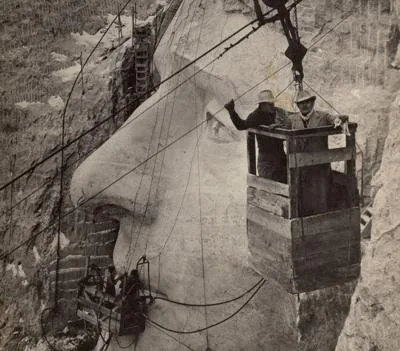
On the Mount Rushmore tramway, the two men get an up-close glimpse at the cliffside sculpture as it takes shape. A fantastic vista for them—and a memorable photograph for us.
Soldiers in Vietnam, 1965
They say that the guys you fight with become your brothers for life, and it certainly appears to be the case for these two soldiers, photographed in the jungles of Vietnam in the 1960s.
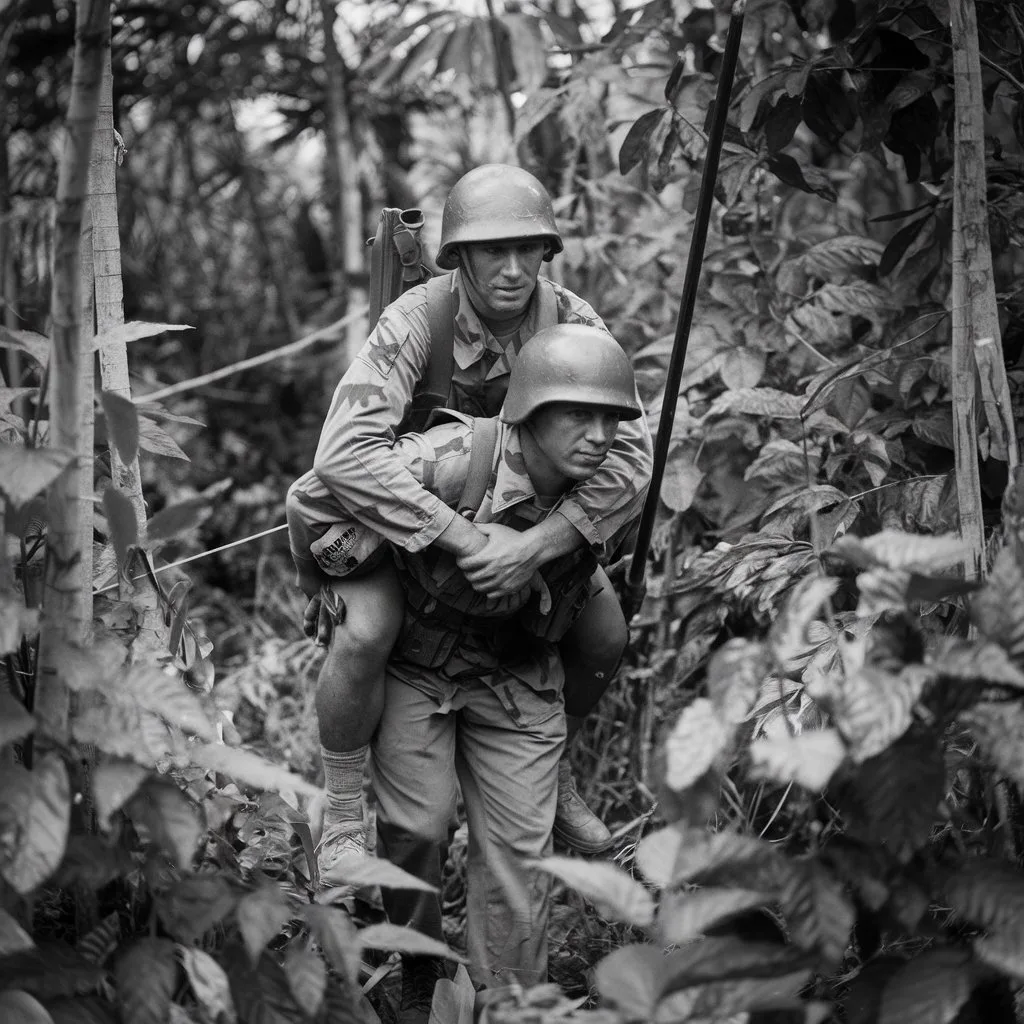
Instead of abandoning his injured brother-in-arms in the jungle, this Navy Corpsman carried his fellow Marine on his back to safety, where he hoped to recover from his wounds and survive to fight another day. Talk about real heroes.
Carving Thomas Jefferson’s Eye, 1930s
Mount Rushmore has become a national emblem, with visitors flocking to South Dakota to see the faces of George Washington, Thomas Jefferson, Theodore Roosevelt, and Abraham Lincoln. But we hadn’t given any thought to how difficult it must have been to create until we saw this photo.
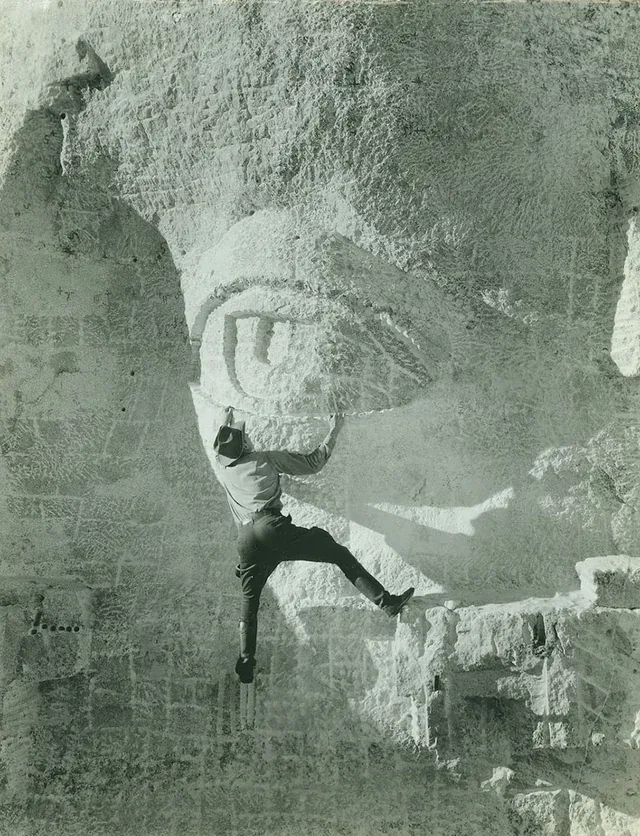
With no harnesses to keep him safe, this guy is truly living on a prayer as he carves the intricacies of Thomas Jefferson’s eye from the mountain’s stone. We are unable to look away.
Christian Dior Hat Show, 1963
The 1960s were an iconic decade in more ways than one. In addition to the revolutionary “peace and love” style of life, there was a great deal of change and invention in all forms of creative expression, from music and painting to fashion.
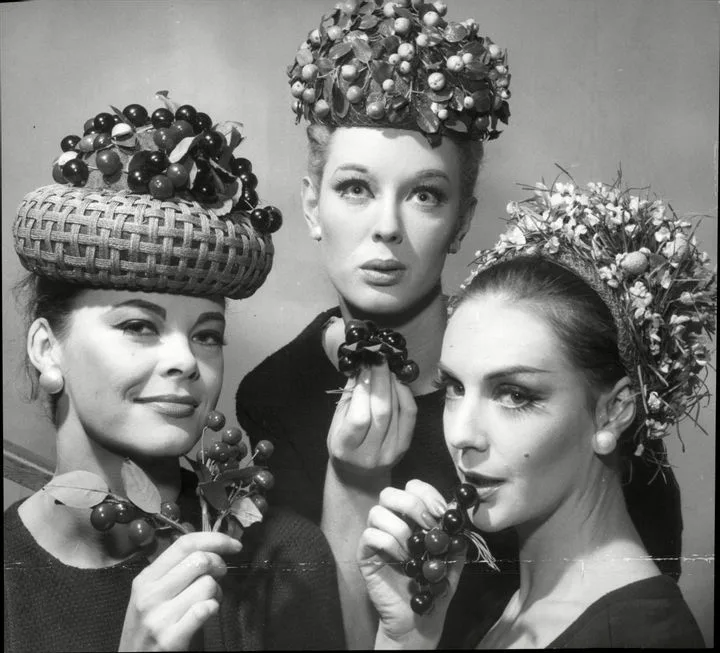
Here, we can see legendary fashion designer Christian Dior’s fresh and inventive hat shapes, as worn by current models Oonagh Dunne, Nena Dubois, and Anne Milling. What we wouldn’t give to be a fly on the wall!
André Courrèges Fashion Models, 1965
Here’s a collection of models wearing some of the most classic outfits and styles from the chicest decade of all time, the swinging 1960s.
André Courrèges, a fashion designer, devised these barrel-shaped leather skirts held up by flamboyant suspenders. These designs, together with another era stylistic characteristic, the cowl-necked top, marked the decade’s revolutionary attitude and continue to influence fashion today.
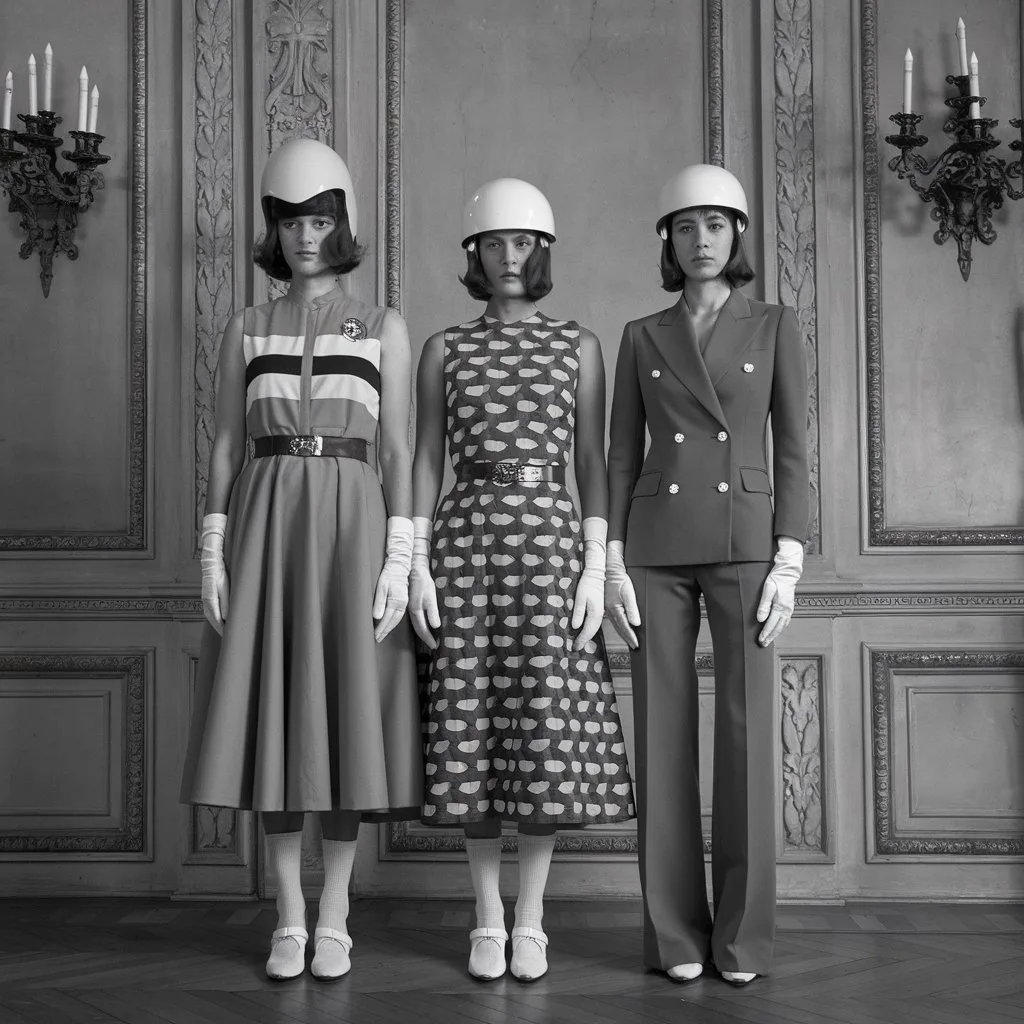
The bold lines and styles are reminiscent of the 1960s, reminding us of the original definition of chic.
Swimsuits in Skegness, 1975
Many Brits may recognize the name Butlins, a well-known and popular holiday resort with locations around the United Kingdom. It isn’t recognized for being the classiest or fanciest resort, yet families from all over the country still enjoy it and visit every summer.
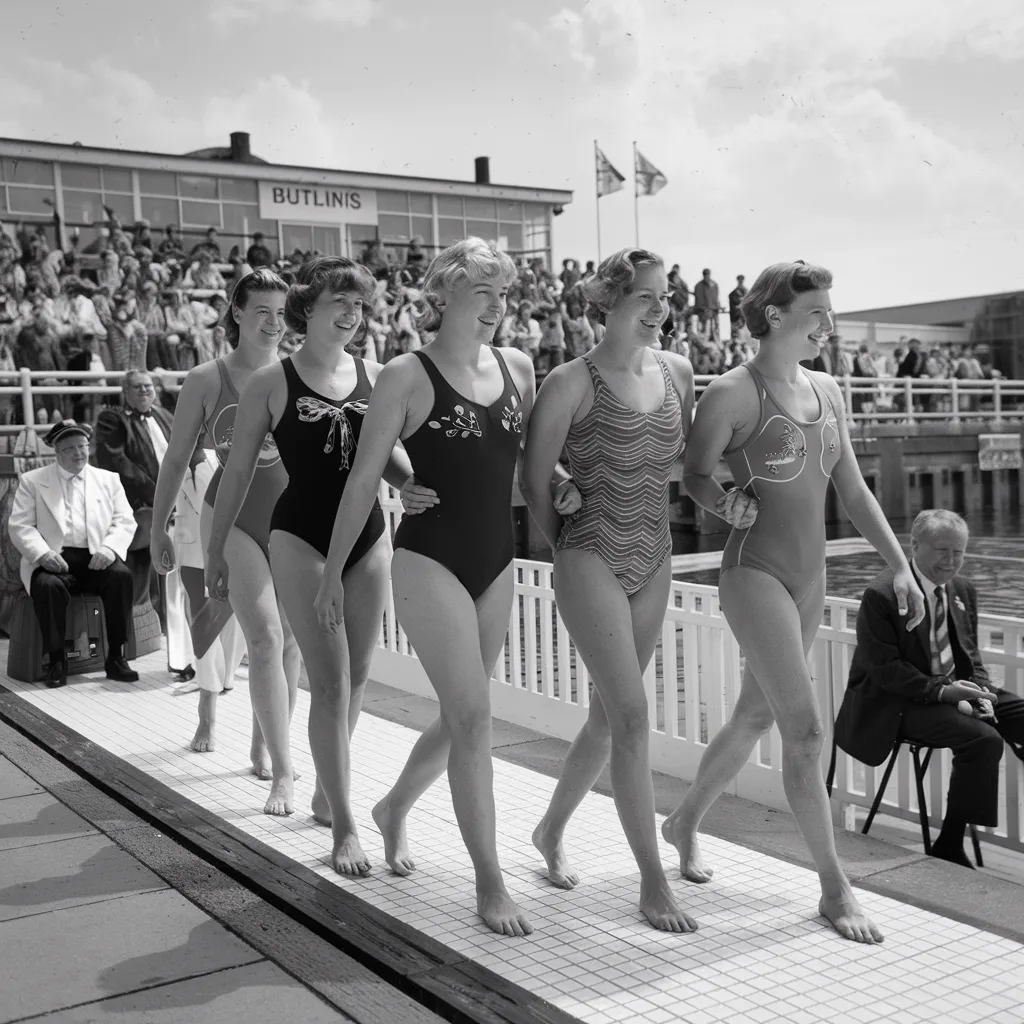
Many people may be surprised to witness this highly sophisticated and fashionable arrangement of women going around in their swimsuits at the resort. It’s not the type of clothes we see today!
Lake Placid, 1923
Is there anything more elegant and gorgeous than this picture? Three stunning young women are enjoying a cup of tea on a beautiful ski table, which has been beautifully set on top of an idyllic frozen lake.
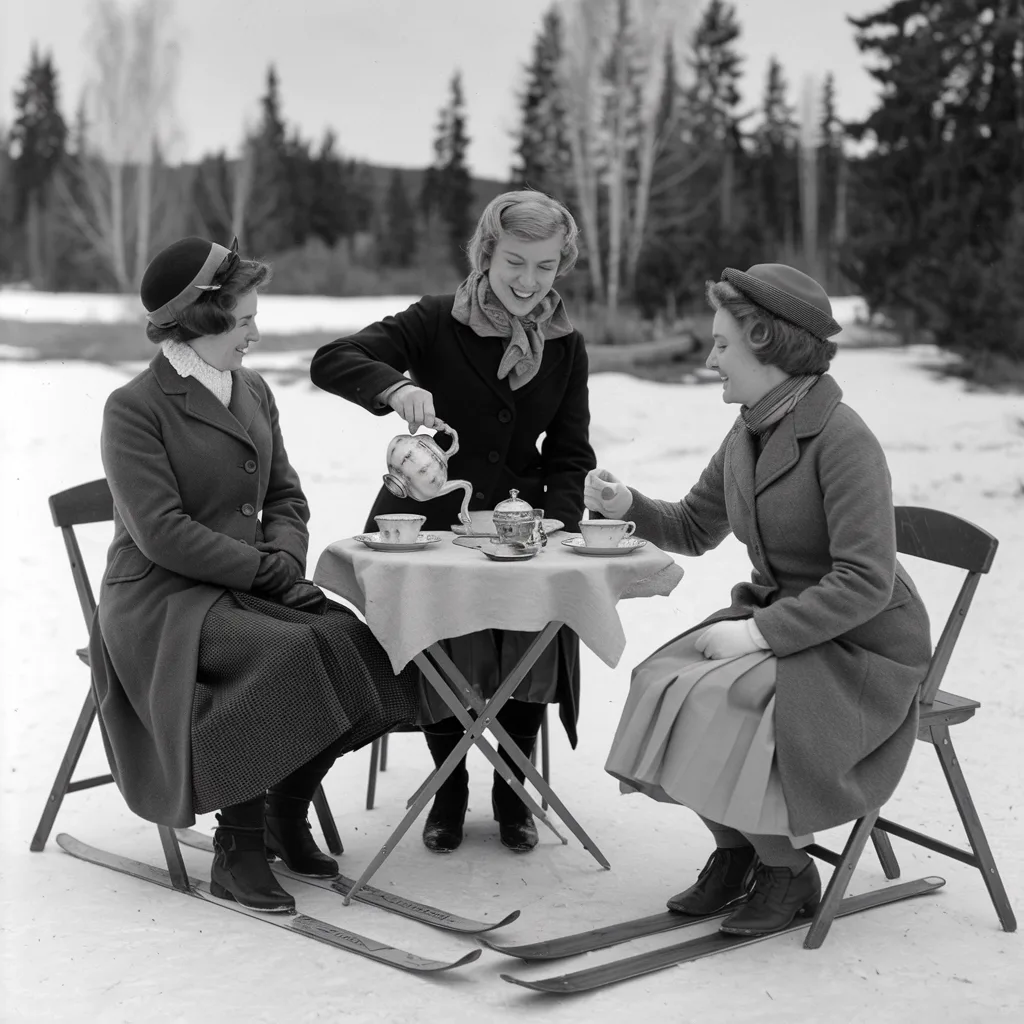
These days, we’d be slipping about all over the place, before heading off to a cheap and cheerful café round the corner. Just as much fun, but not with the same kind of panache and effortless style that these ladies are so easily pulling off. What a time to be alive.
British Antarctic Expedition, 1911
The frozen wonderland of Antarctica remains a mystery to us now, but it was even more obscure in the early 1900s—that is until photographers decided to explore the enormous territory and return with photographic evidence of its grandeur.
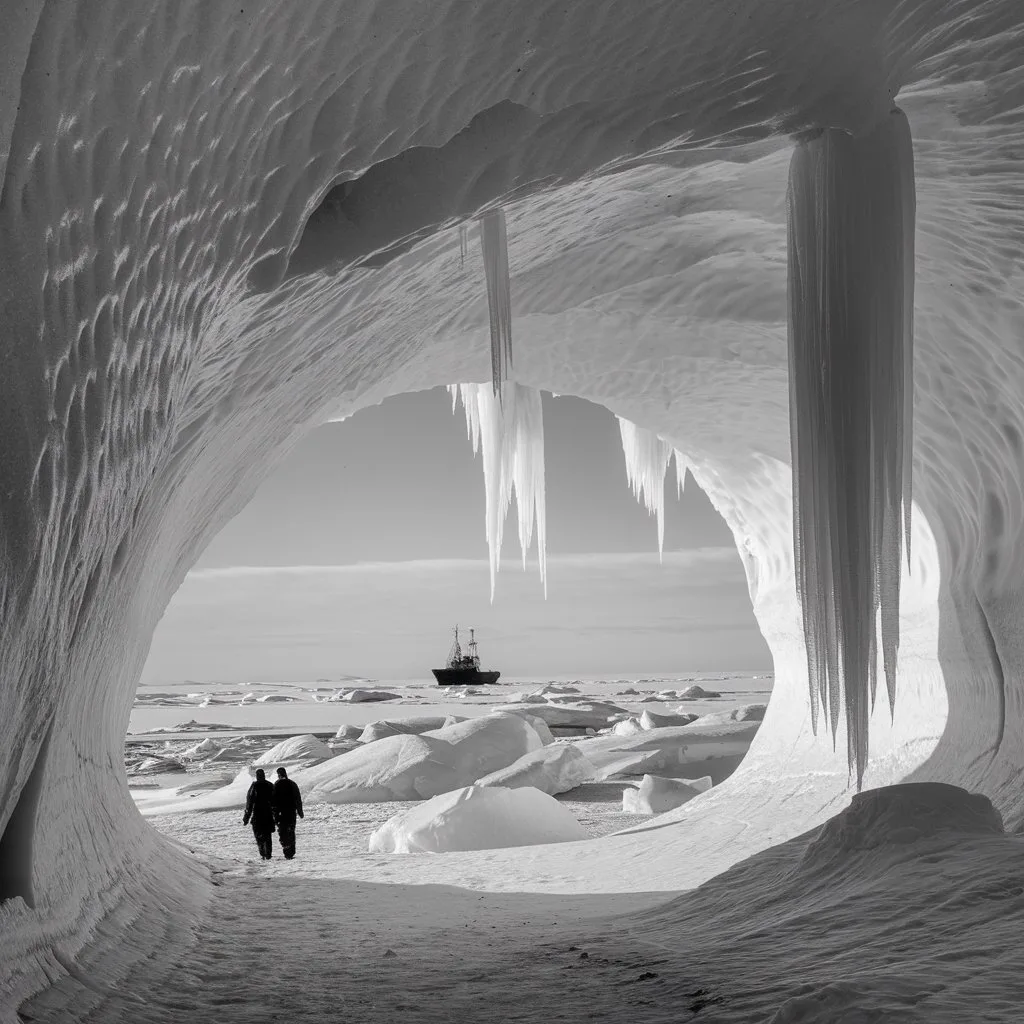
This wonderful composition demonstrates the beauty of the earth’s creations, with the grotto in the ice emphasizing how insignificant we people are in comparison to these natural ice caves. What a humbling reminder of nature’s vastness and power.
Nikola Tesla in His Lab, 1899
While most of us associate “Tesla” with expensive electric automobiles, the American-Serbian inventor Nikola Tesla was a formidable force to be reckoned with, especially given that he spent his entire exploring the limitations of energy.
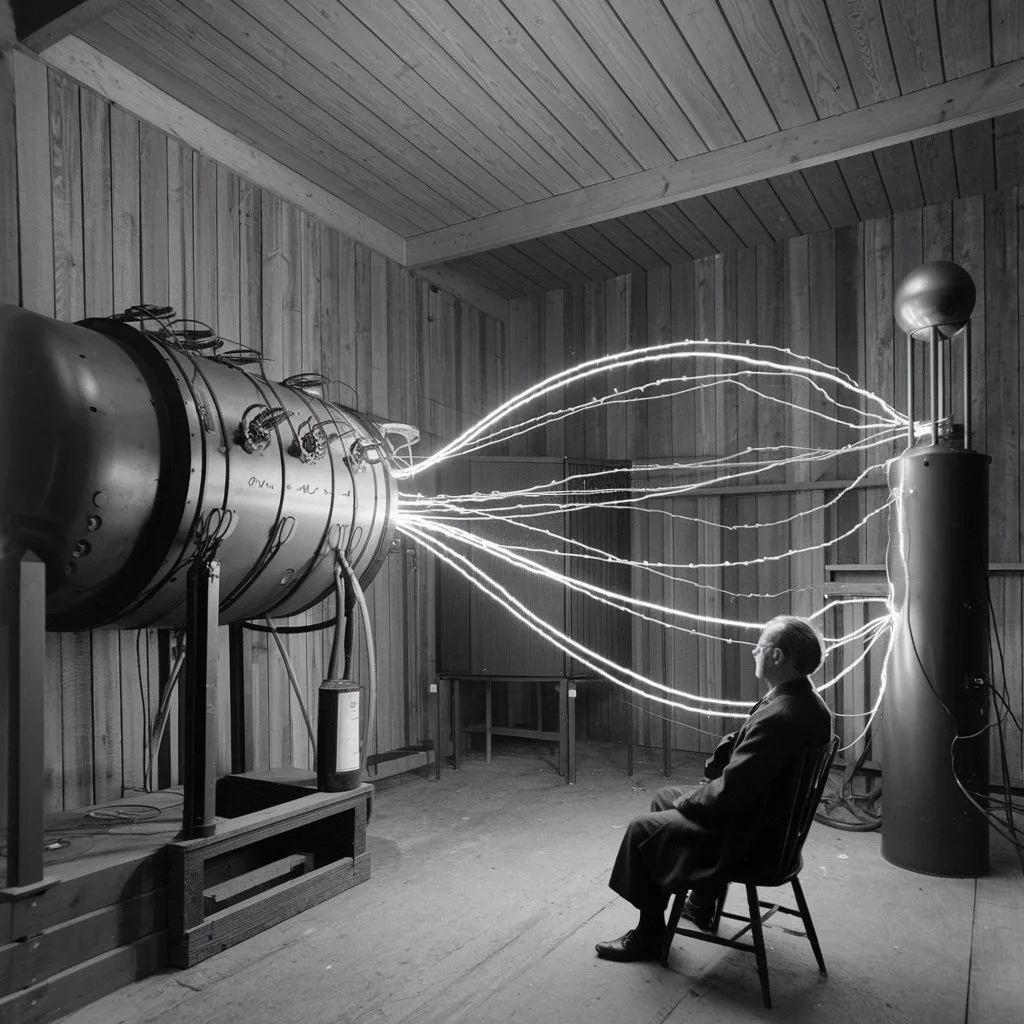
This insane snapshot is a creative combination of two shots—one with electric power crackling and the other with Tesla sitting comfortably as if he’s simply reading the morning paper. Even so, this bizarre image illustrates the power—and audacious eccentricity—of his mind-bending innovations.
Macy’s Day Parade, 1931
The Macy’s Day Parade is one of the most well-known and popular Thanksgiving traditions. Could you imagine your holiday without it?! But take a look at this photo from 1931, when the practice had only been going for a little over a decade.
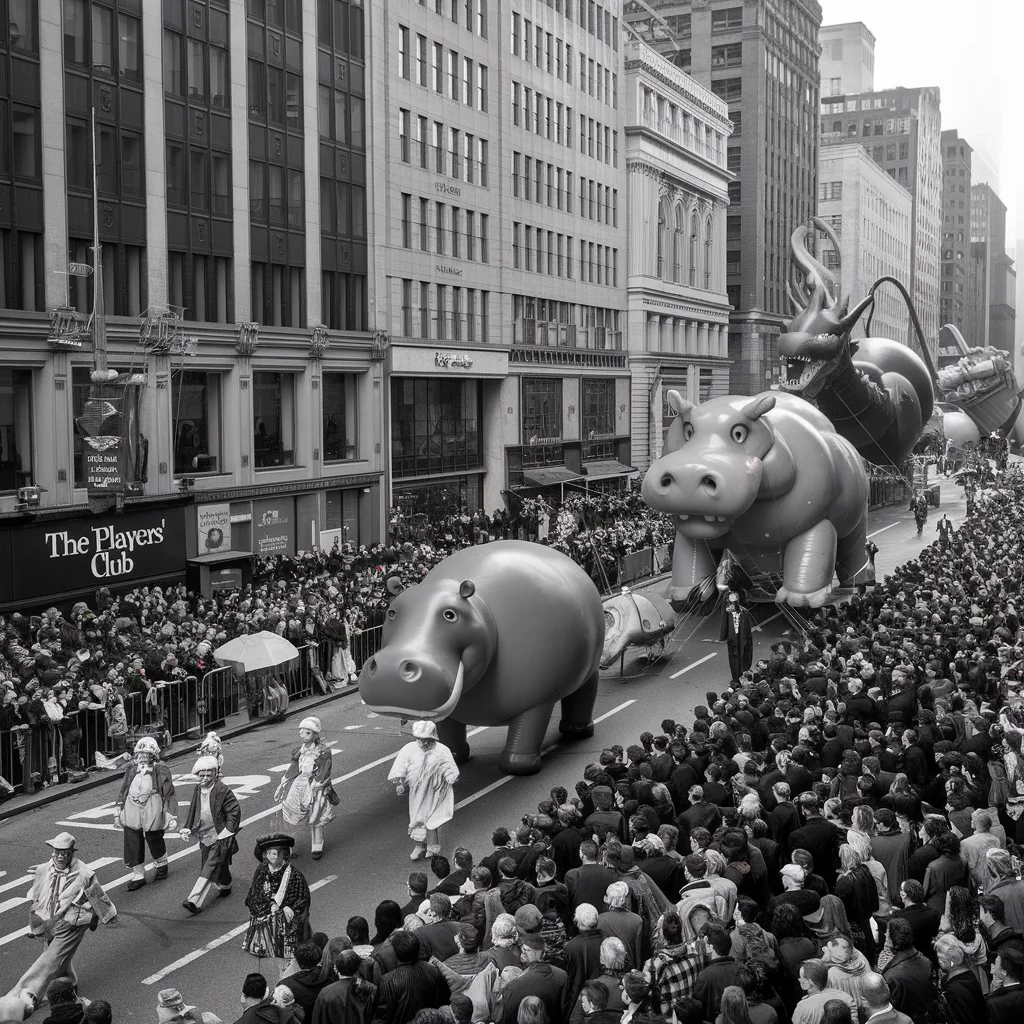
The pomp and grandeur in this photo are just breathtaking, and while the Parade is still a sight to behold, nothing can truly recreate the magic of the tradition’s early days.
Penicillin Plant, 1940s
We frequently conceive of today’s era as the most technologically sophisticated, and in many respects, that is entirely correct. Today’s breakthroughs and technologies move at breakneck speed, but we must remember the life-changing scientific developments that enabled all of these incredible discoveries.
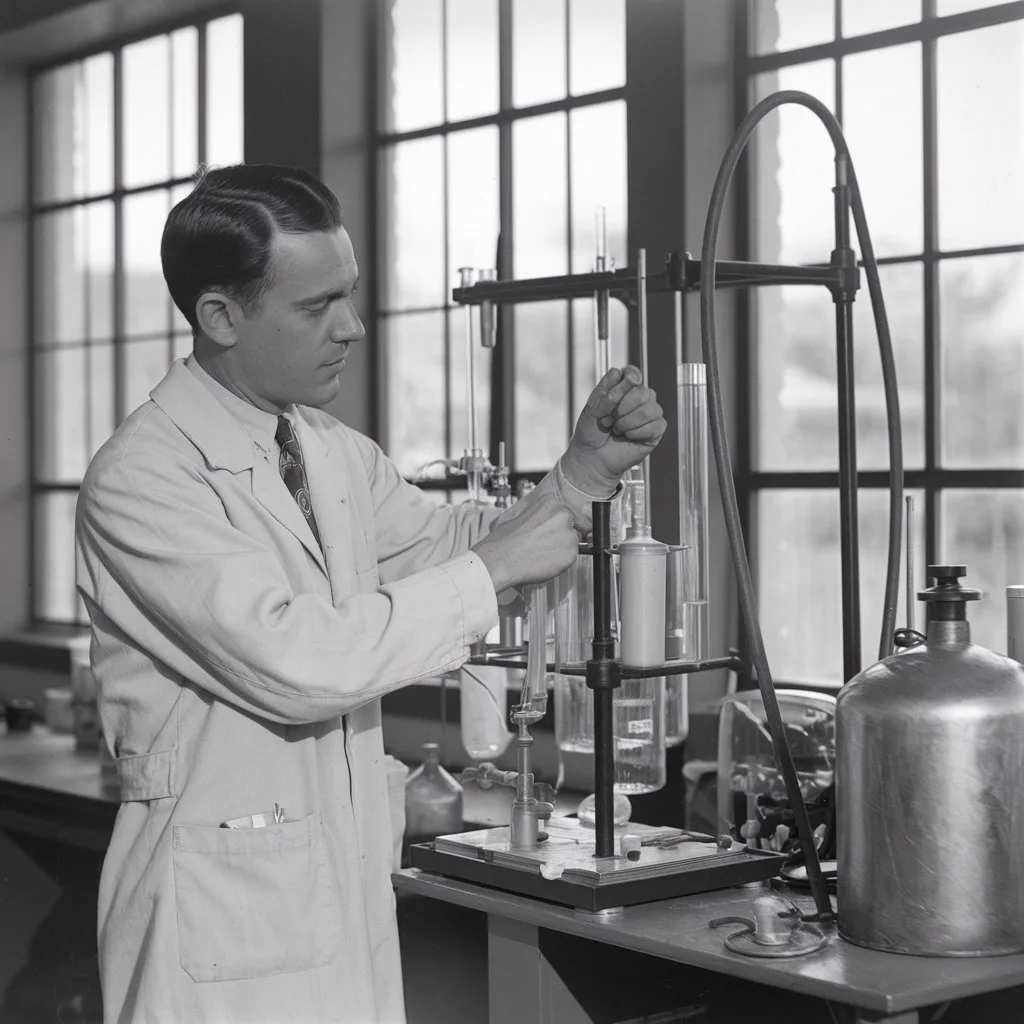
This incredible photograph depicts the experimental penicillin extraction facility utilized by a research team at Oxford University in England. Penicillin is, of course, one of the most significant medical advances in history, and this photograph captures a genuinely key time in those breakthroughs.
Anton Dostler’s Execution, 1945
We thought we’d seen everything until we saw this frightening image of Anton Dostler just before his execution. During World War II, Dostler was a German general who became the first high-ranking commander killed by the Allies for war crimes. In 1944, he ordered the death of 15 American servicemen captured behind enemy lines in Italy.
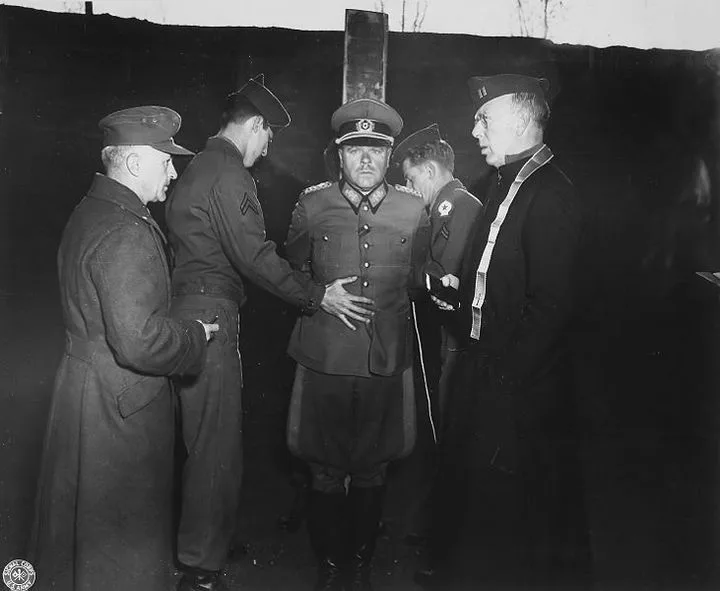
He was tried for war crimes in Nuremberg, found guilty, and executed by firing squad in December 1945, becoming a gloomy emblem of the consequences of following illegal commands.
Living Life on the Edge
Talk about living on the brink! A group of acrobats balancing atop the Empire State Building back in 1934—just a few years after the skyscraper was erected.
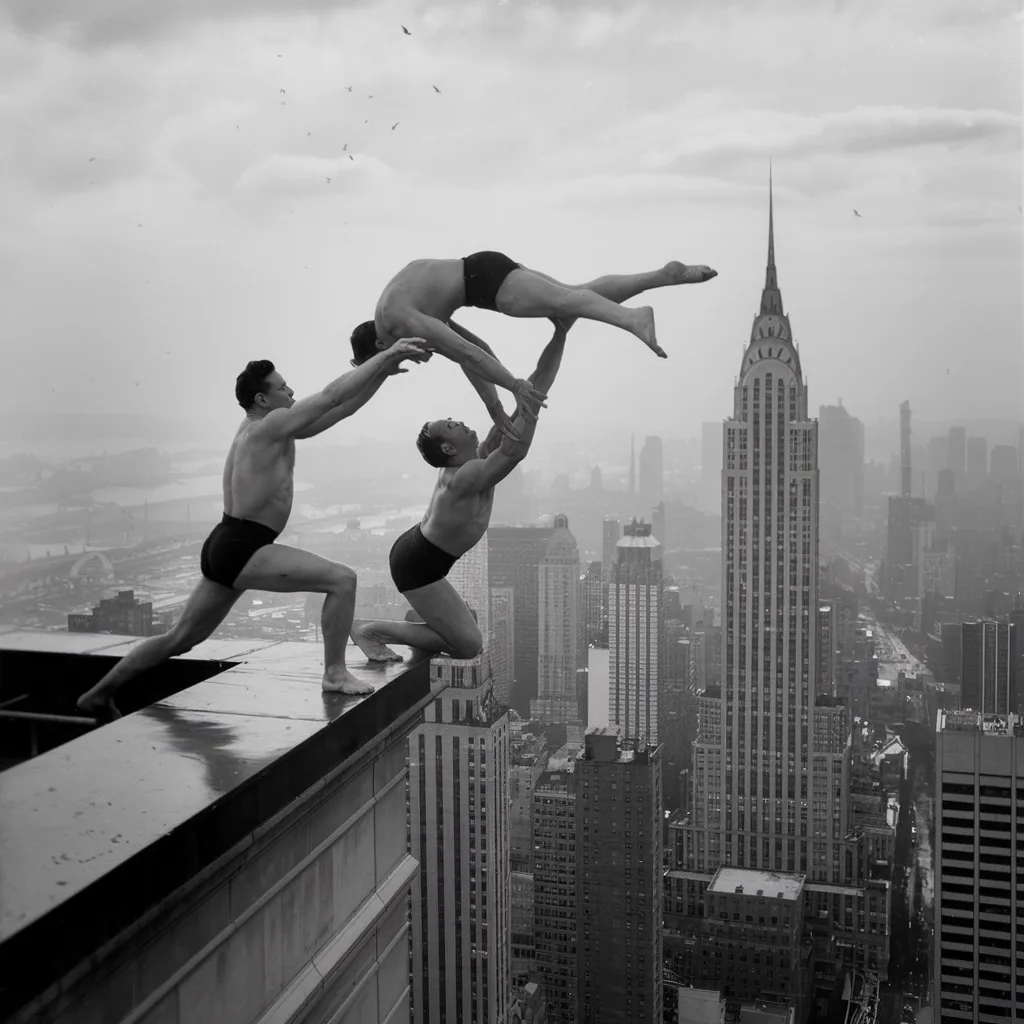
The Empire State Building, located in Manhattan, is 102 floors tall and took a year to complete. Construction began in March 1930 and completed in April 1931.
Mount Vesuvius
Mount Vesuvius in Italy, which rises above the Gulf of Naples, has a devastating and unpredictable history. It’s erupted multiple times.
In this shot, troops watch Mount Vesuvius erupt in 1944.
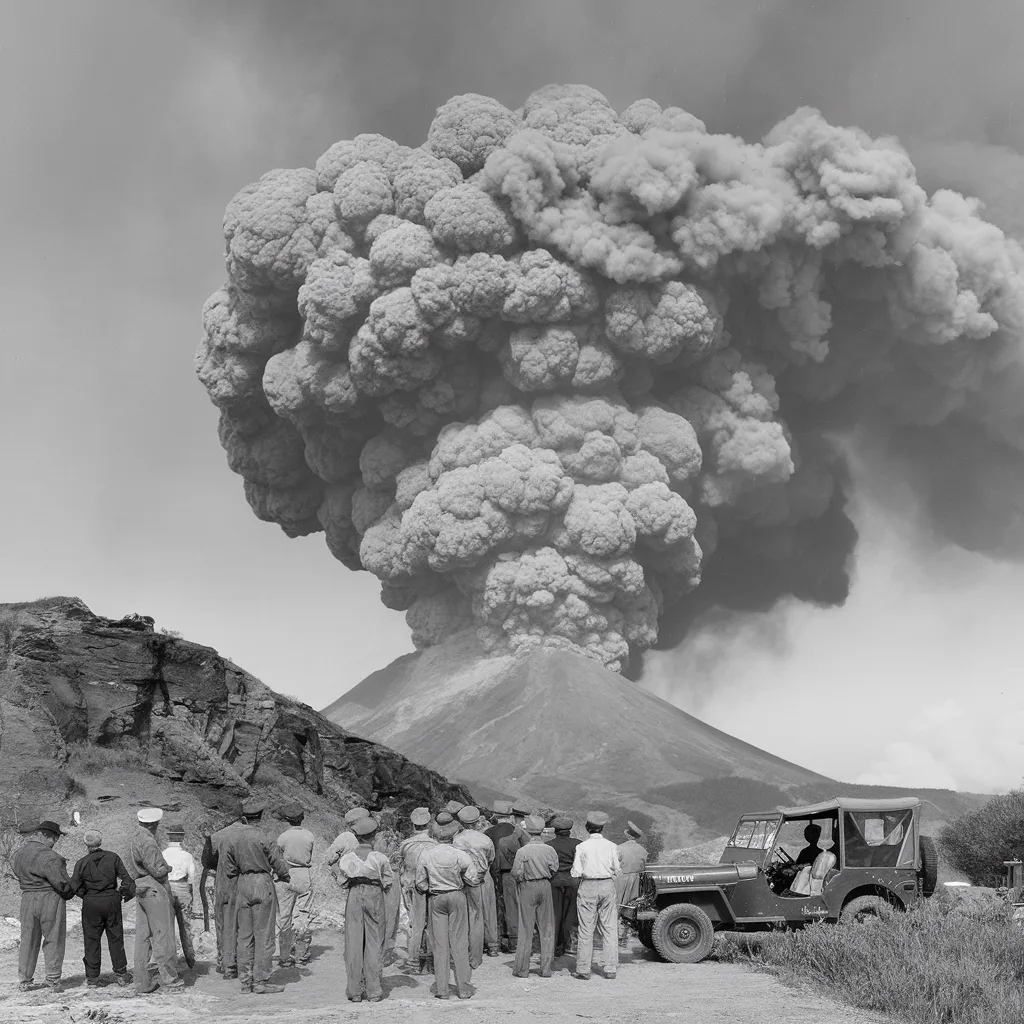
There have been no eruptions since that year, though landslides in the crater have created clouds of ash dust on a few occasions since 1944, creating false alarms about an eruption.
Sneaky, Sneaky
Before you ask, this is not a photo of Fred Astaire’s shoes. In truth, you’re looking at an ancient law enforcement photo from 1924, in which a police officer is seen trying on a ‘cow shoe.’
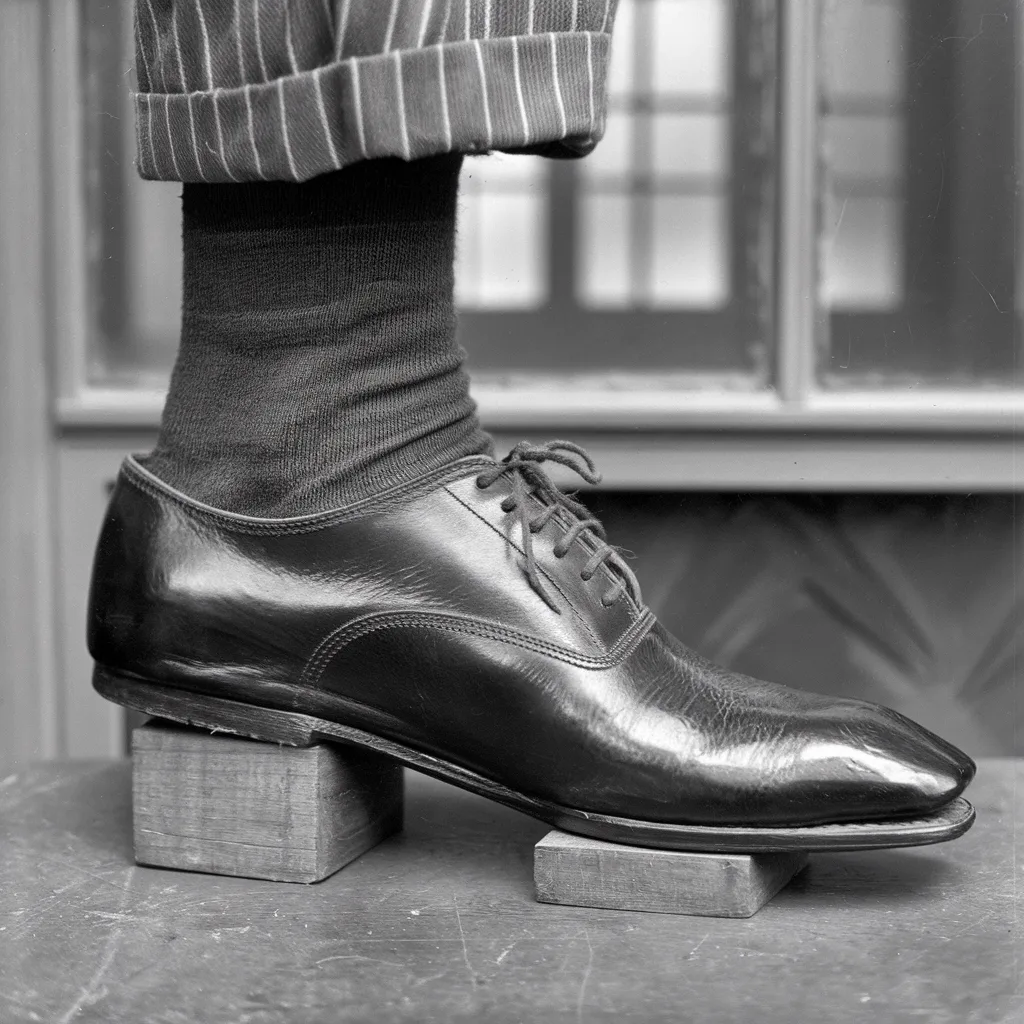
These shoes, made from a strip of metal glued to a wooden block, are carved to resemble a cow’s hoof.
President Calvin Coolidge, 1927
Believe it or not, this photograph shows President Calvin Coolidge accepting his honorary membership into the Standing Rock Sioux Tribe in 1927.
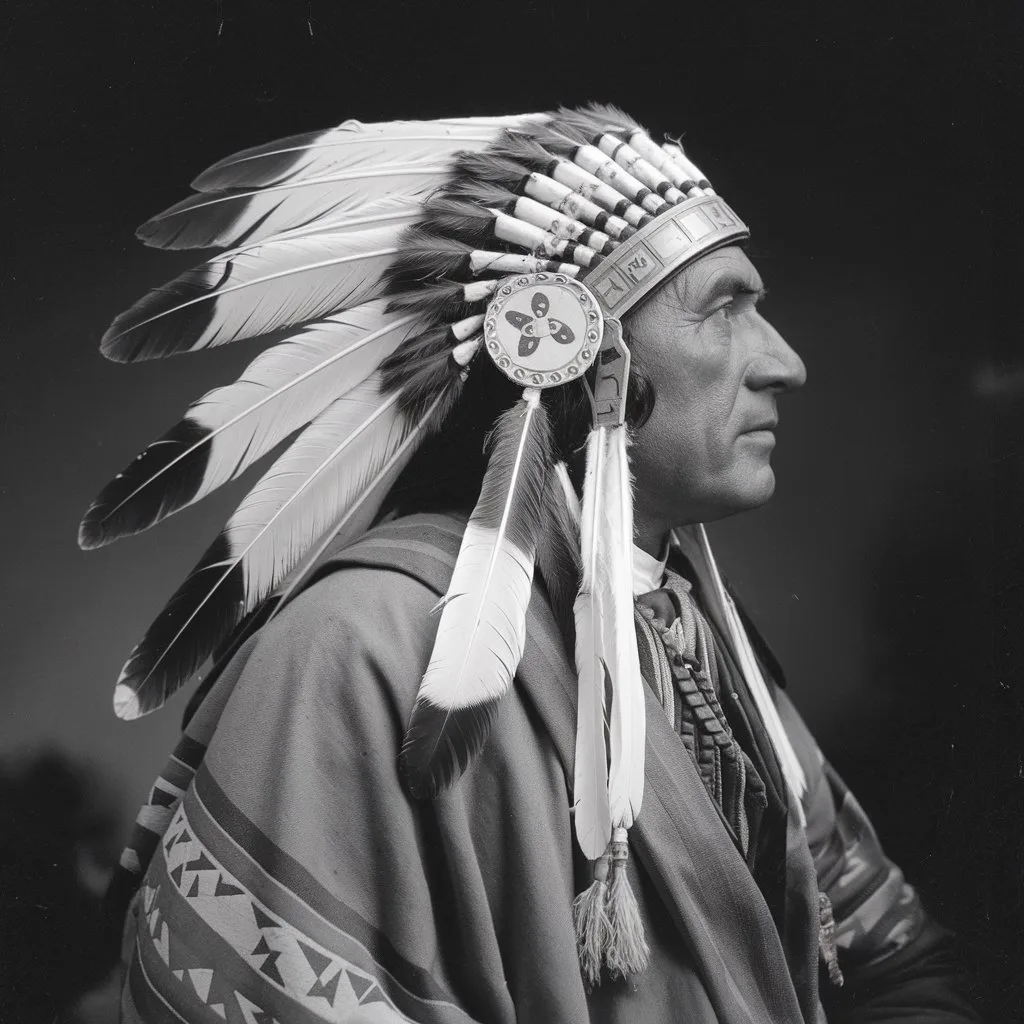
Coolidge was the first president of the United States to pay an official visit to a reservation, and he fought for tribal rights throughout the country, including granting Native Americans citizenship. As a result, he was honored with the title “Leading Eagle” and a feathered combat hat.
Thalidomide Baby Portrait, 1850s
There were numerous health issues in the Victorian era that were no longer common. One of them was phocomelia, which causes reduced or missing limbs. The most notorious example in history was the usage of thalidomide, which resulted in severe limb malformations in thousands of babies.
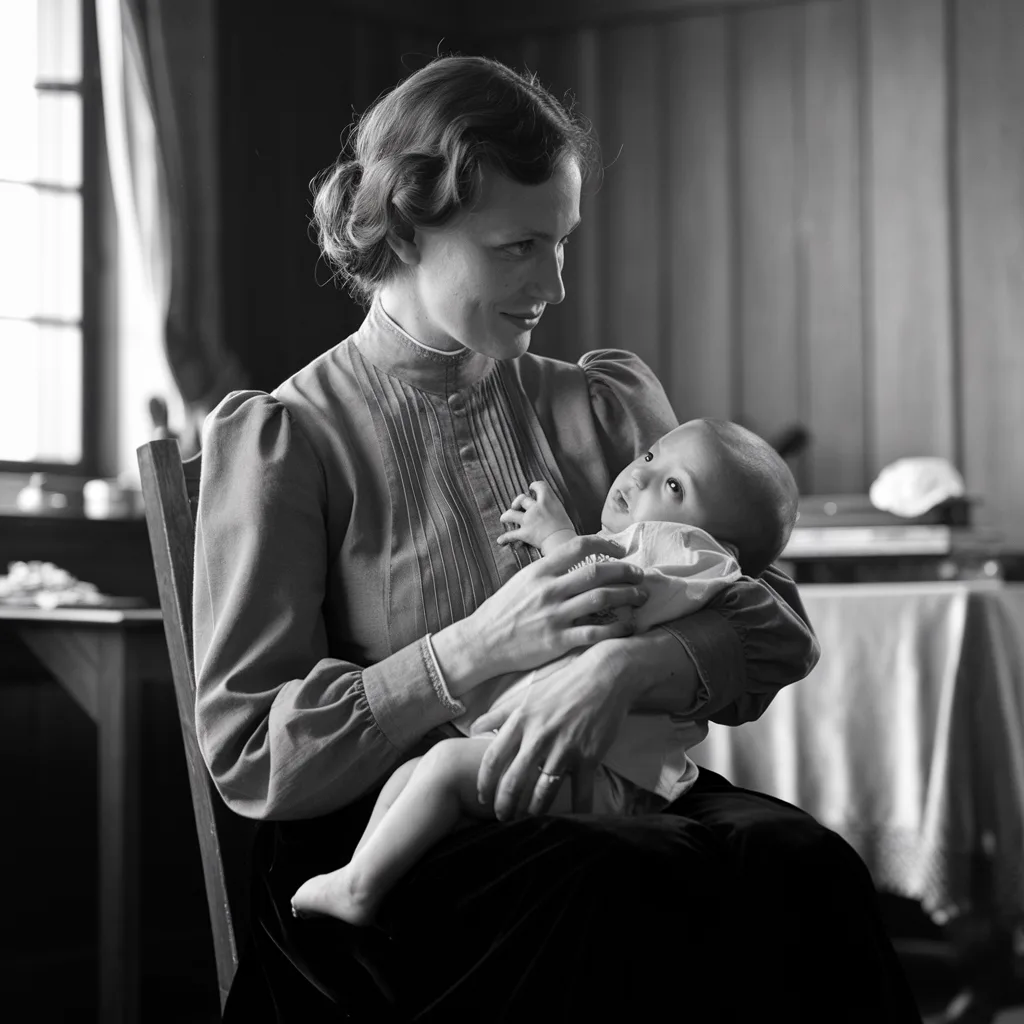
Photographs like these documented the lives and struggles of these youngsters, providing a profound peek into medical and social history at the time.
Ocean Empress and Deep Sea Diver, 1800s
In the 1800s, the world was on the verge of discovering the wonders hidden beneath the ocean’s surface, and scuba diving took a risky turn with the introduction of hard hat diving suits.
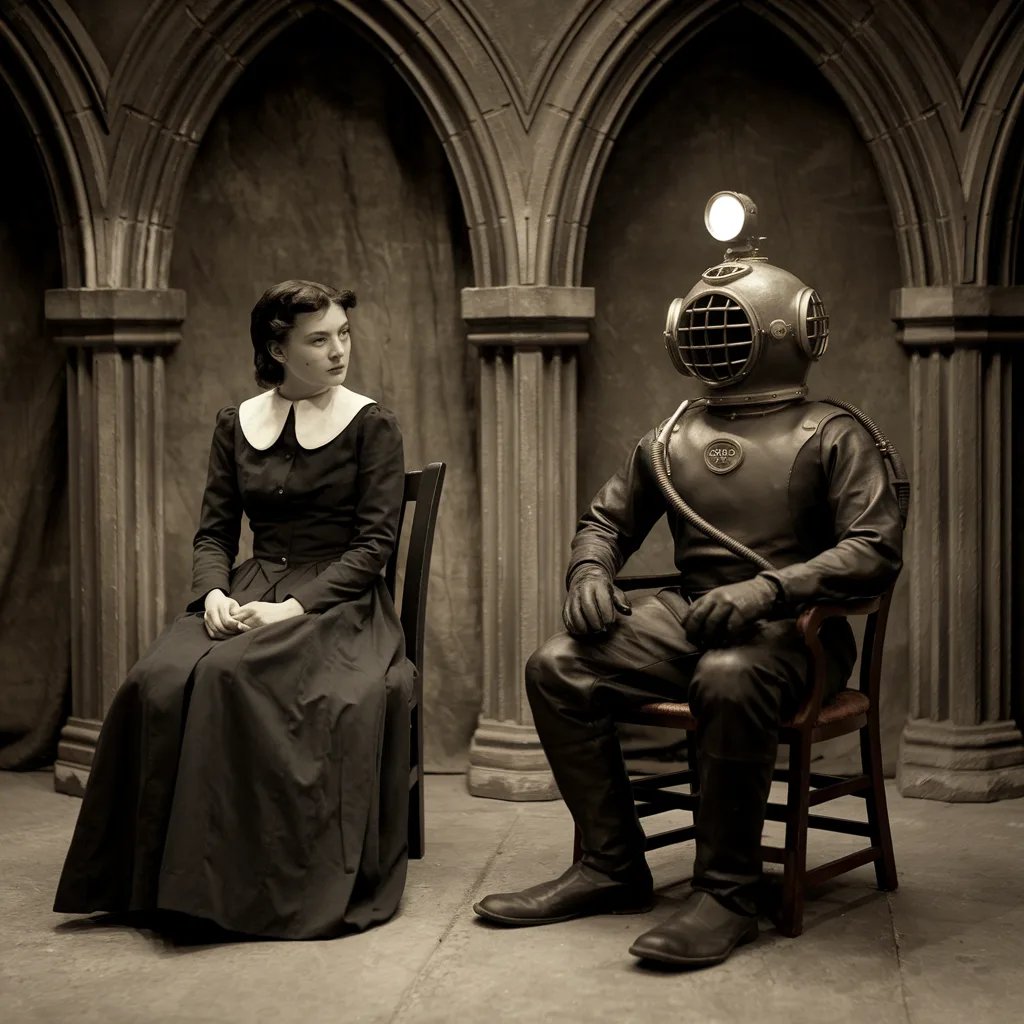
They don’t appear like the advanced equipment we have now, but this was a significant upgrade from what they had previously. So much so that this man was posing with his wife in his.
Victorian Halloween Costumes, 1890s
Halloween costumes are not new, but they have evolved. Halloween costumes in the Victorian era looked very different from those we see today. Costumes were frequently handcrafted and created to look frightening and otherworldly, reflecting the era’s obsession with the mysterious and macabre.
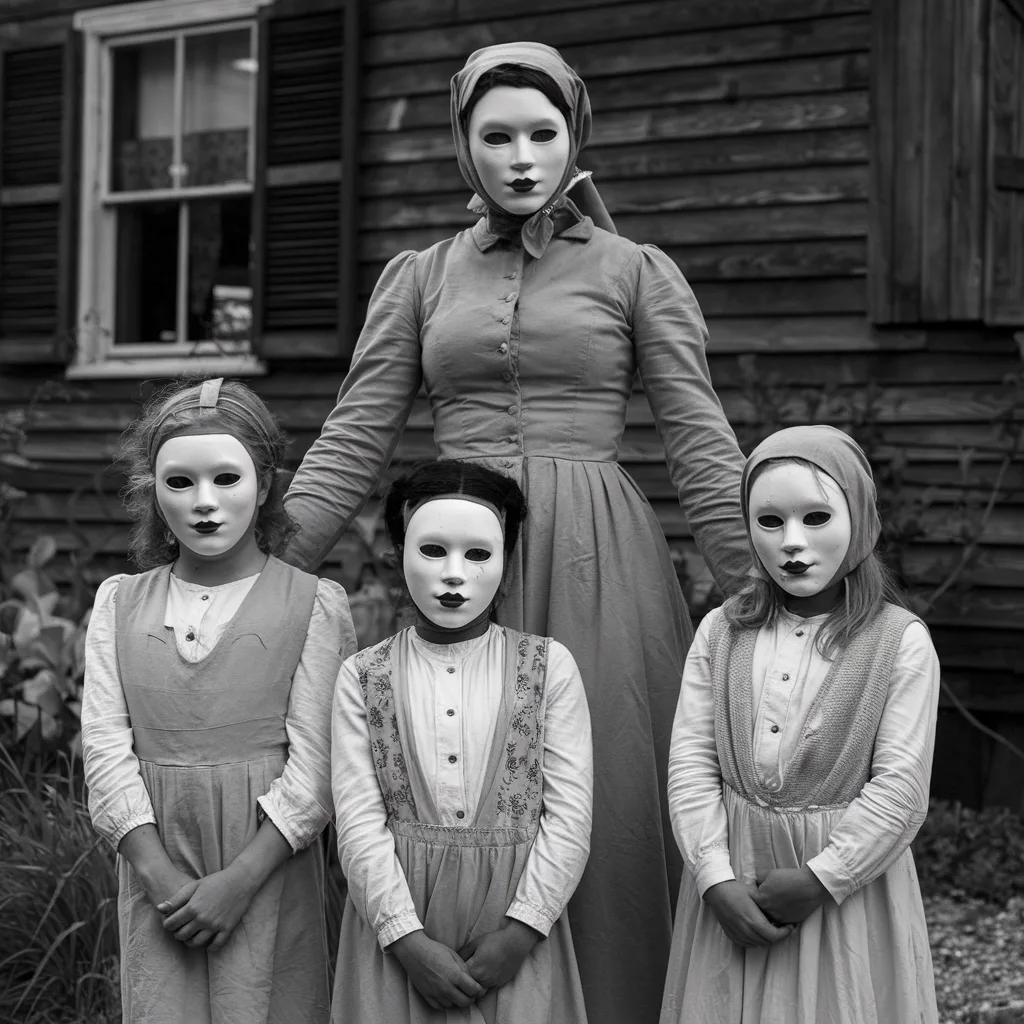
People would dress up as ghosts, witches, and other eerie characters with basic items such as blankets, dark textiles, and masks. Unlike the mass-produced, flashy costumes of today, Victorian Halloween costumes were more solemn and designed to create terror.
Lynch’s Slave Market, 1852
With our cities now filled with contemporary structures and fresh construction, it’s difficult to think that not long ago, our streets were tarnished by the slave trade, which was prevalent in many places, including St. Louis, Missouri, where this photograph was shot.
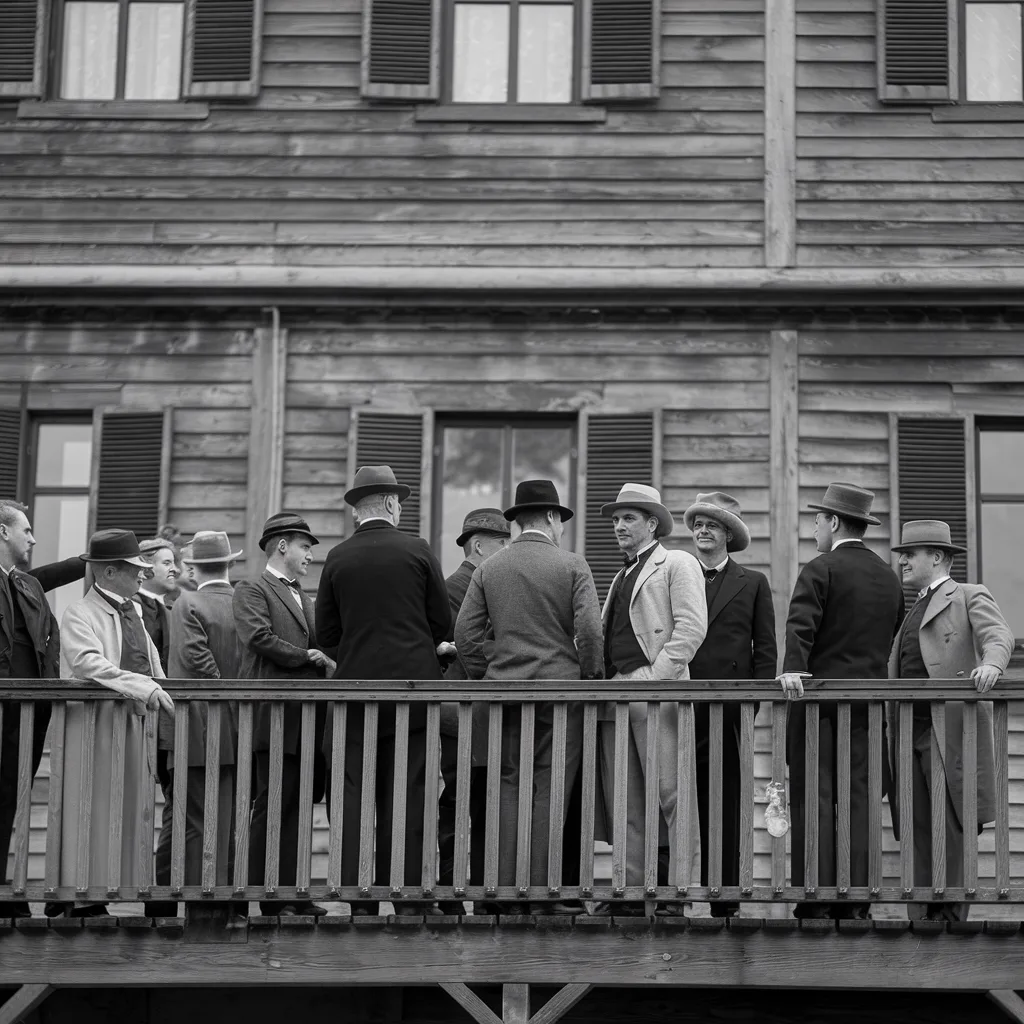
In 1852, 13 years before slavery was legally abolished in the United States, these men gathered around Lynch’s Slave Market, one of numerous markets in St. Louis. It’s incredible to see a photograph that captures a piece of history so vividly.
Gus Lessis, 1926
Goodness me! Now, each to his own, but some hobbies are extremely strange. Here we can see Greek strongman Gus Lessis bending over backwards with an 800-pound rock on top of his chest. Next to him is a man readying himself to smash said rock with a hammer. Now this is a very impressive feat of strength, but we just have to ask ourselves—why would anyone do this?
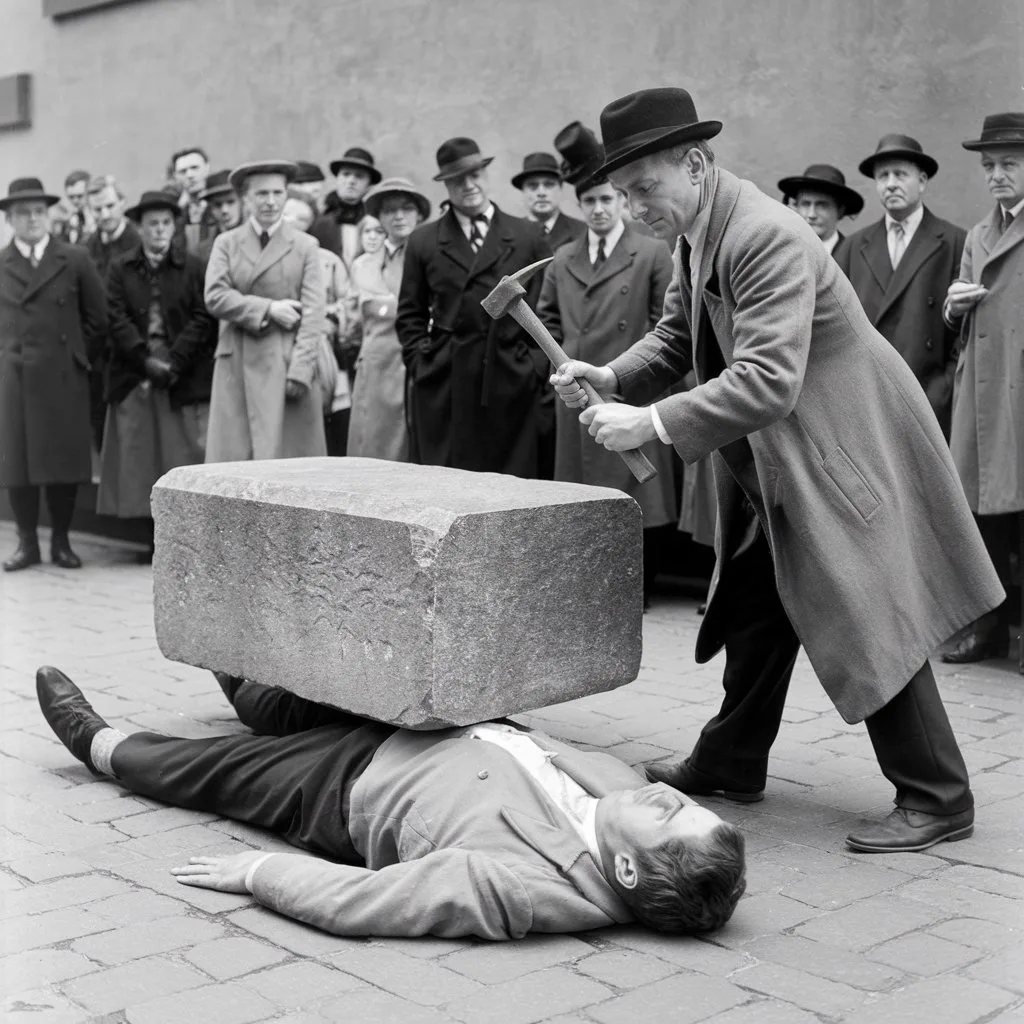
We’d rather stay at home with a cup of tea, and we don’t see this photo being duplicated anytime soon.
Girl With Artificial Legs, 1890
Even if research and experiments have advanced the development of mechanical limbs throughout time, we had no notion their use dates back to the 1800s.
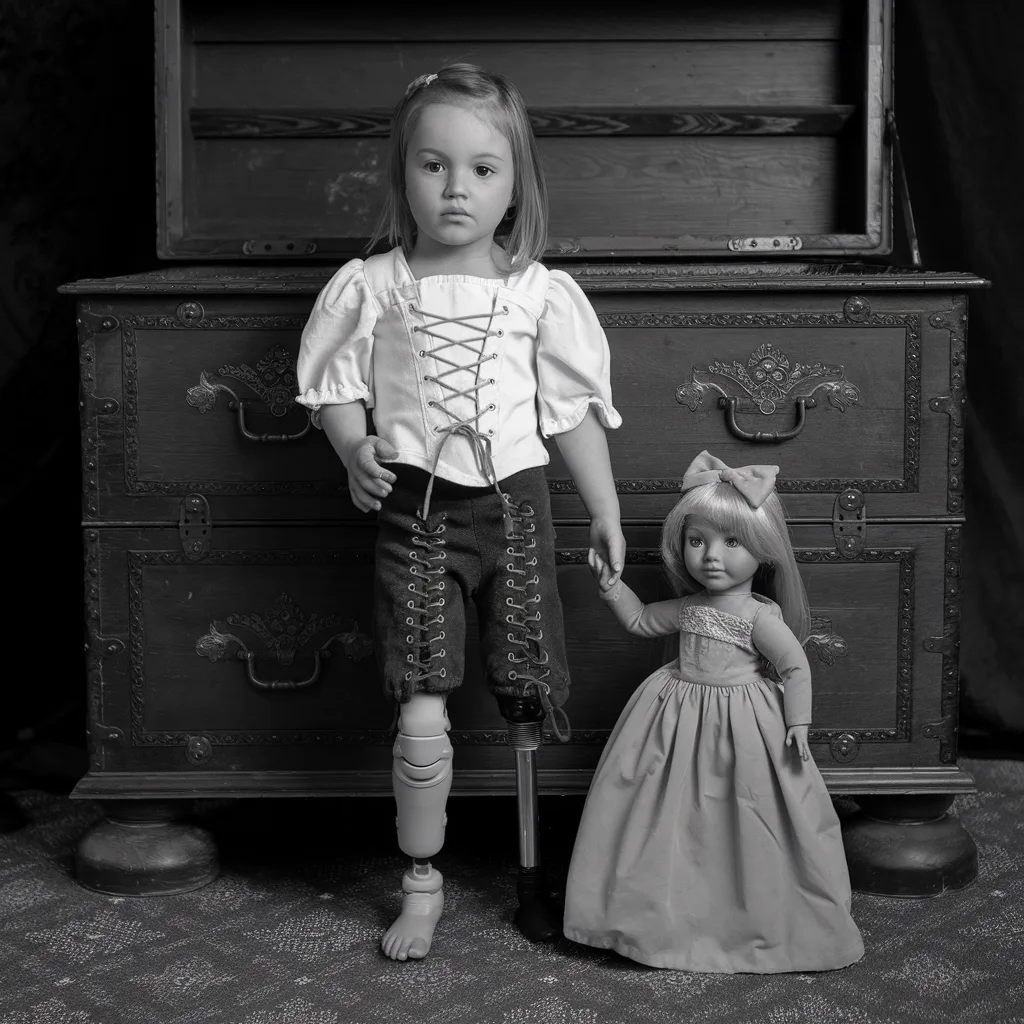
A boot and shoemaker in the UK created a set of artificial legs for this young girl, allowing her to walk despite her impairment. Even 130 years ago, people were finding methods to overcome obstacles and live completely. As they say, necessity is the mother of invention, and this is an excellent example.
Disposing of Liquor, 1921
When we think of the 1920s, we usually think of flapper girls and fabulous parties, all the glitz and glamor of the roaring twenties. But in reality, a lot of the party scene that took place in this iconic decade was actually secret and behind closed doors—because of the prohibition laws that were in effect throughout the country.
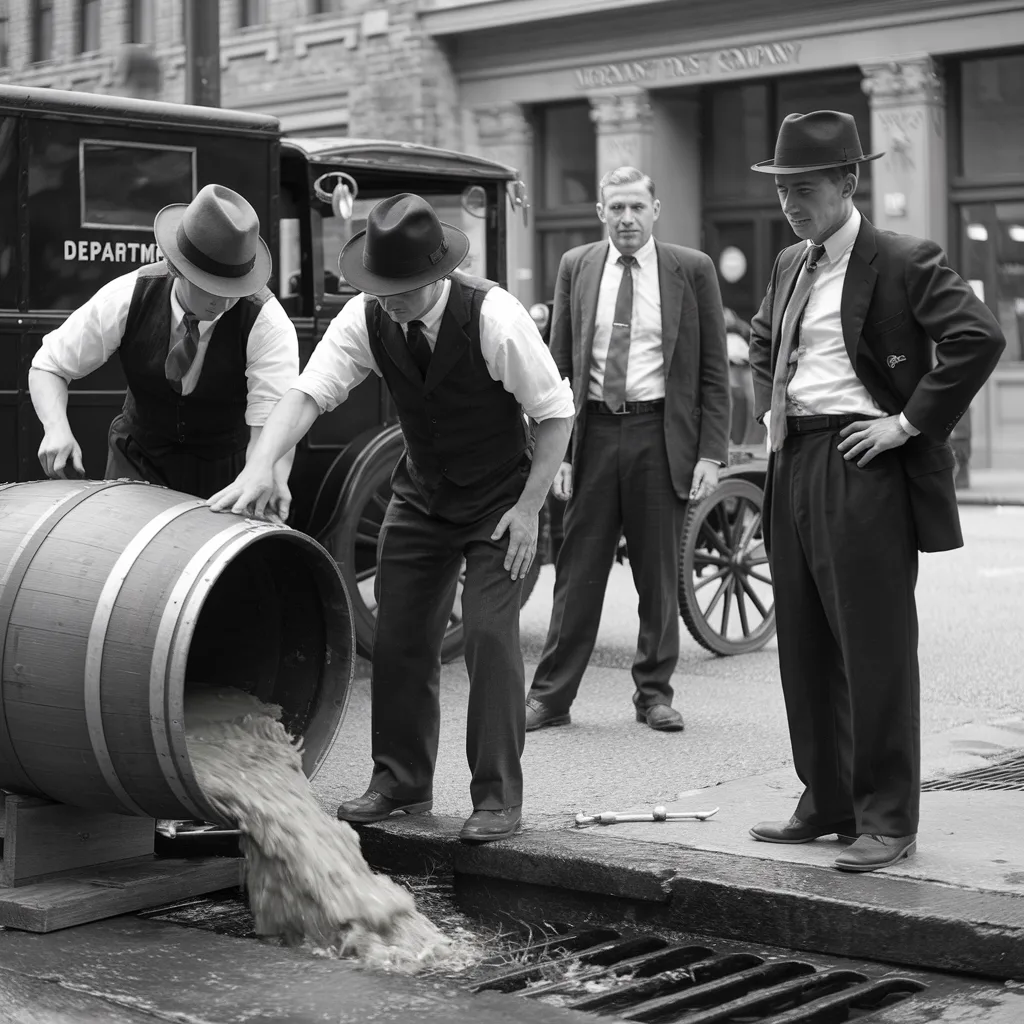
John A. Leach, the Deputy Police Commissioner of New York City, is seen here after conducting a raid. And you can see that he has found a large barrel of liquor and ordered that it be poured directly into the sewers. What an astonishing sight!
Airplane Wing, 1942
During WWII, Americans from all walks of life stepped up to contribute to the war effort, helping in any way they could to support the U.S. military and their troops.
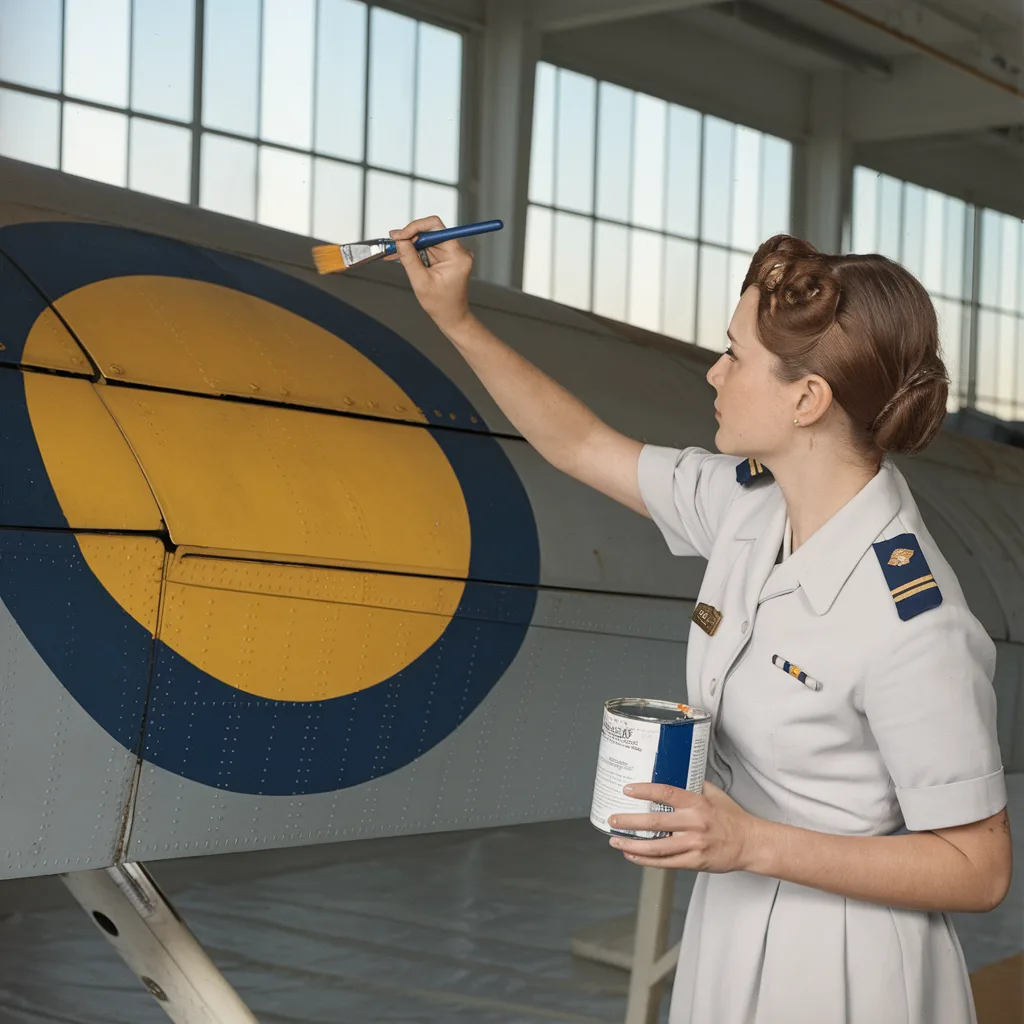
Here’s an extremely lovely example: a civil service walker has been spotted painting the America emblem on the wing of a US Navy airplane. This amazing photograph was taken at the Naval Air Base in Corpus Christi, Texas, in 1942, and the hand-painted, laborious work is undoubtedly something we would not see today.
Albert Einstein, 1939
It’s strange to see any picture of Albert Einstein looking like a regular person, doing regular things. His eccentric looks and demeanor, coupled with his truly legendary abilities and mathematical legacies, make him feel truly like the stuff of mythology rather than a regular guy, let alone a husband and father.
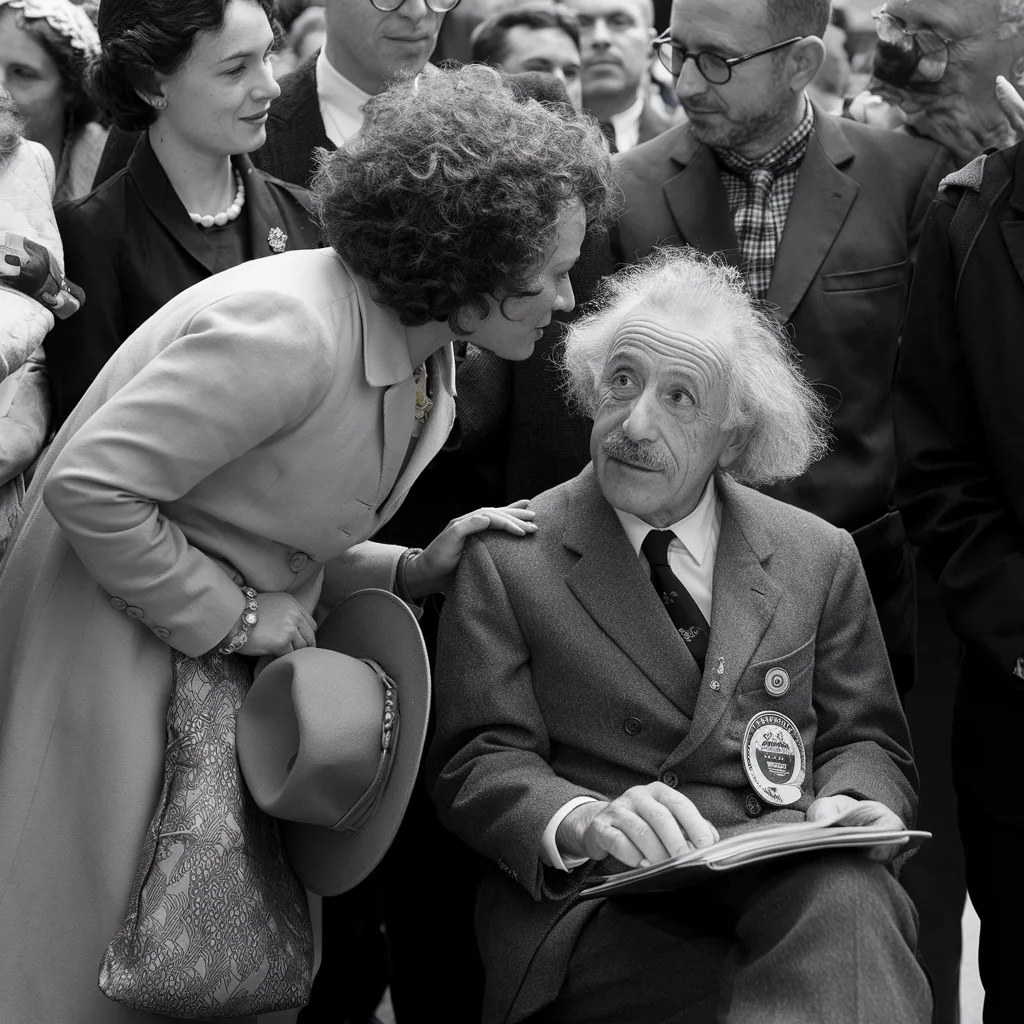
But here he is in 1939, looking like any other dad, albeit with a weird haircut, as his kid sits on his lap while they both attend the opening of the Jewish Pavilion in Queens, New York.
Wernher von Braun With F-1 Engines, 1969
We bet glancing at the photo, you wouldn’t guess this man is a war criminal. Dr. Wernher von Braun, a controversial character, contributed to the American space program after fleeing to the United States to evade prosecution for his role in Germany’s rocket development.
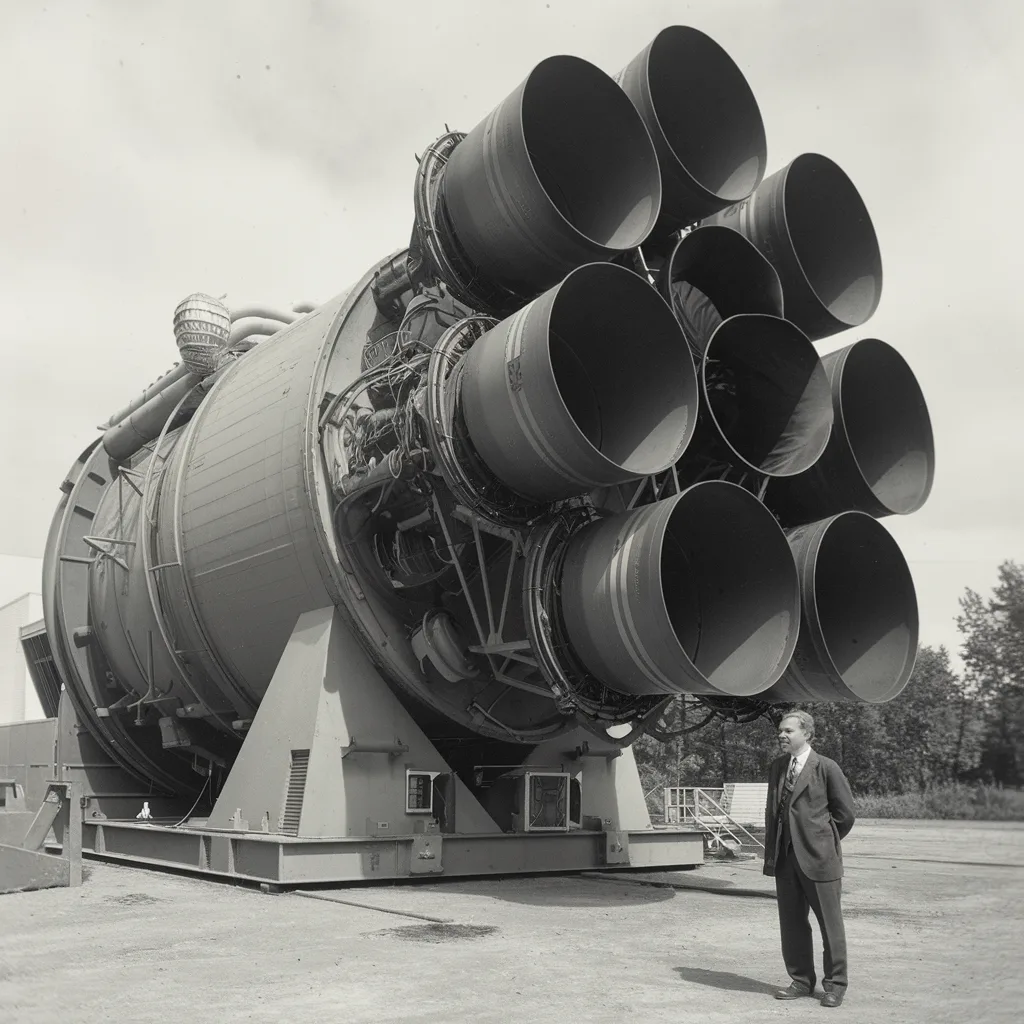
This photograph shows him standing in front of five F-1 rocket engines, which would power the Saturn V rocket that sent people to the moon. While his life was marked by controversy and invention, there is no doubt that he made a significant contribution to history.
Hindenburg Disaster, 1937
If you’re wondering why we don’t travel by airship, this photo will explain everything. The Hindenburg disaster on May 6, 1937, marked a tragic and unforgettable moment in aviation history.
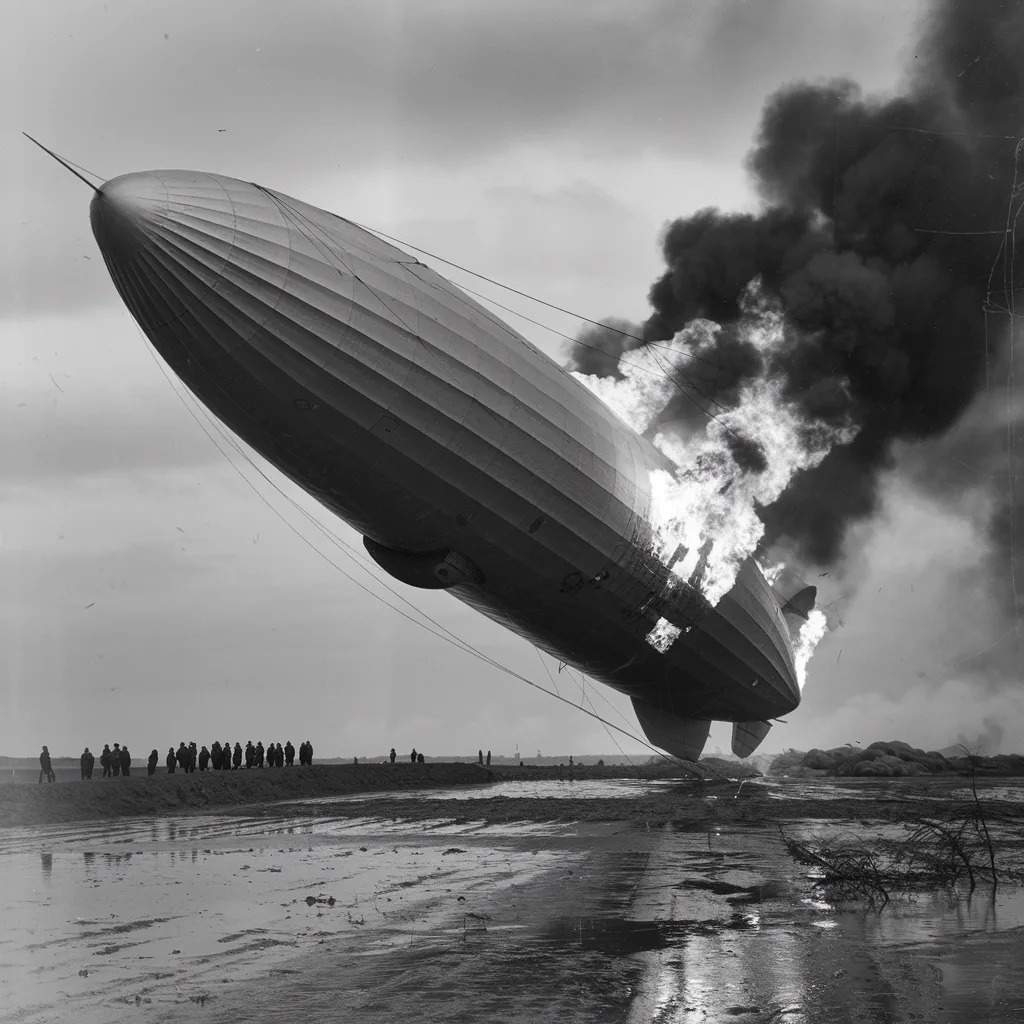
As the gigantic German airship, packed with highly flammable hydrogen, attempted to dock at Lakehurst, New Jersey, it exploded into flames. The fire killed 35 persons on board and one on the ground. Images of the flaming airship quickly traveled throughout the world, thus ending the era of passenger airships.
The Mission Art Company, 1921
This appears to be an image of some small miniature people! However, this is simply a real-life photograph of average-sized folks standing close to their camera in 1921. Yes, that’s right—this shot depicts Mission Art Company photographers and their gadget, a camera mounted into a huge truck.
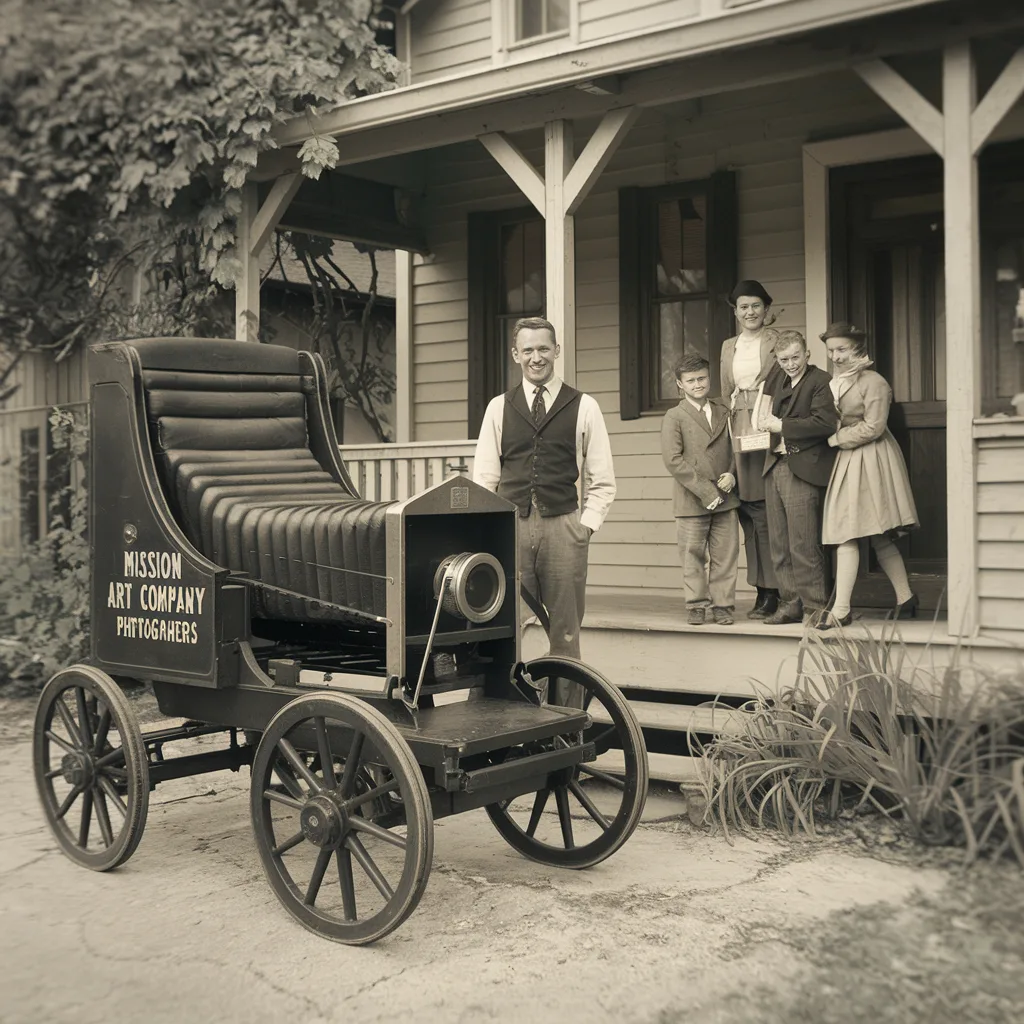
This big camera appears to be a prank or a trick! However, this is what it looked like back then—certainly not something you could keep in your pocket for selfies.
The Original Ronald McDonald, 1963
You either love or despise clowns. If you were there to see the original Ronald McDonald’s debut in 1963, we suspect you have a more negative opinion of them.
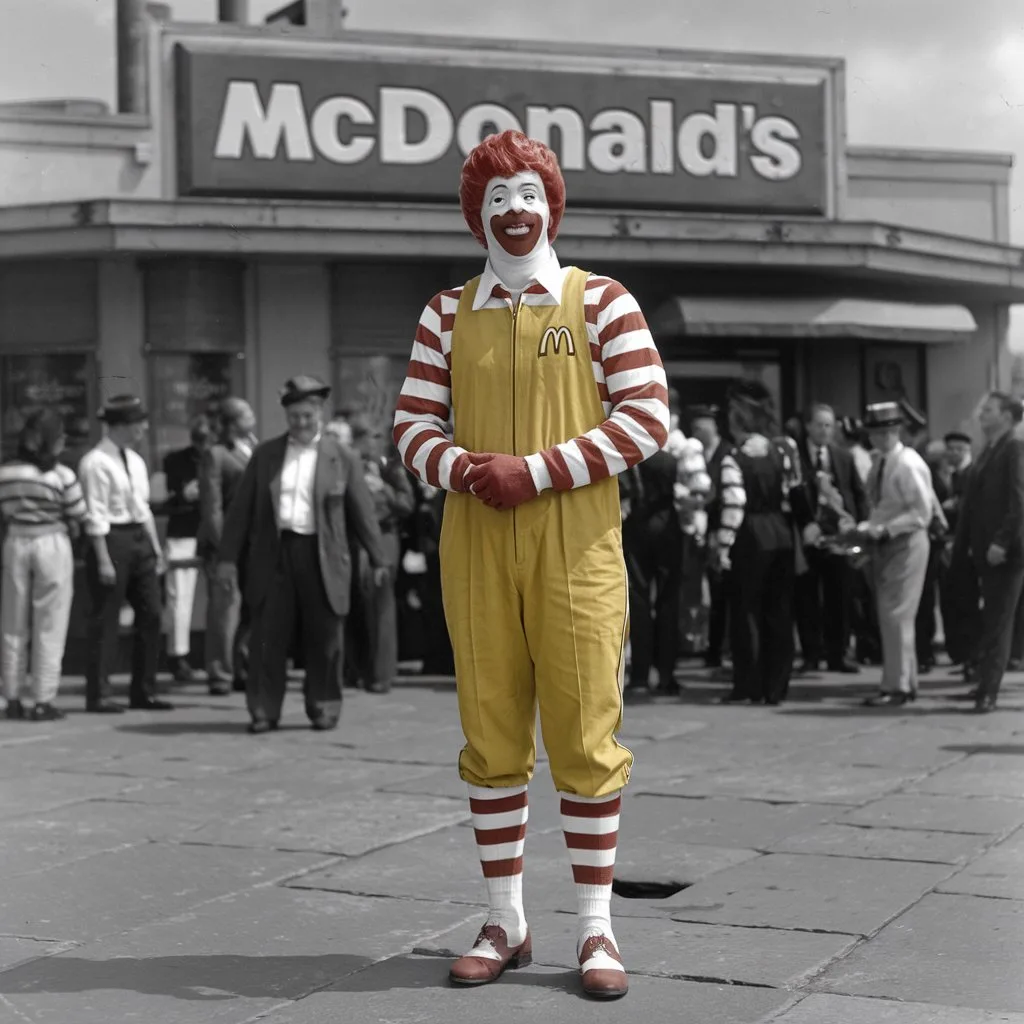
This early Ronald, played by TV weatherman Willard Scott, was a slapstick character rather than the polished clown later iterations would become. Despite the unusual appearance, this Ronald marked the beginning of one of fast food’s most iconic mascots.
Office Heatwave, 1951
When your neighborhood has a heatwave, it frequently makes it easier for you to get to work—because everyone wants to be somewhere with air conditioning!
However, in the 1950s, the women who worked at the Bardwell & McAlister Electronic Plant in Burbank did not have this luxury. That’s why they’re all wearing incredibly short shorts to work to keep cool during the day.
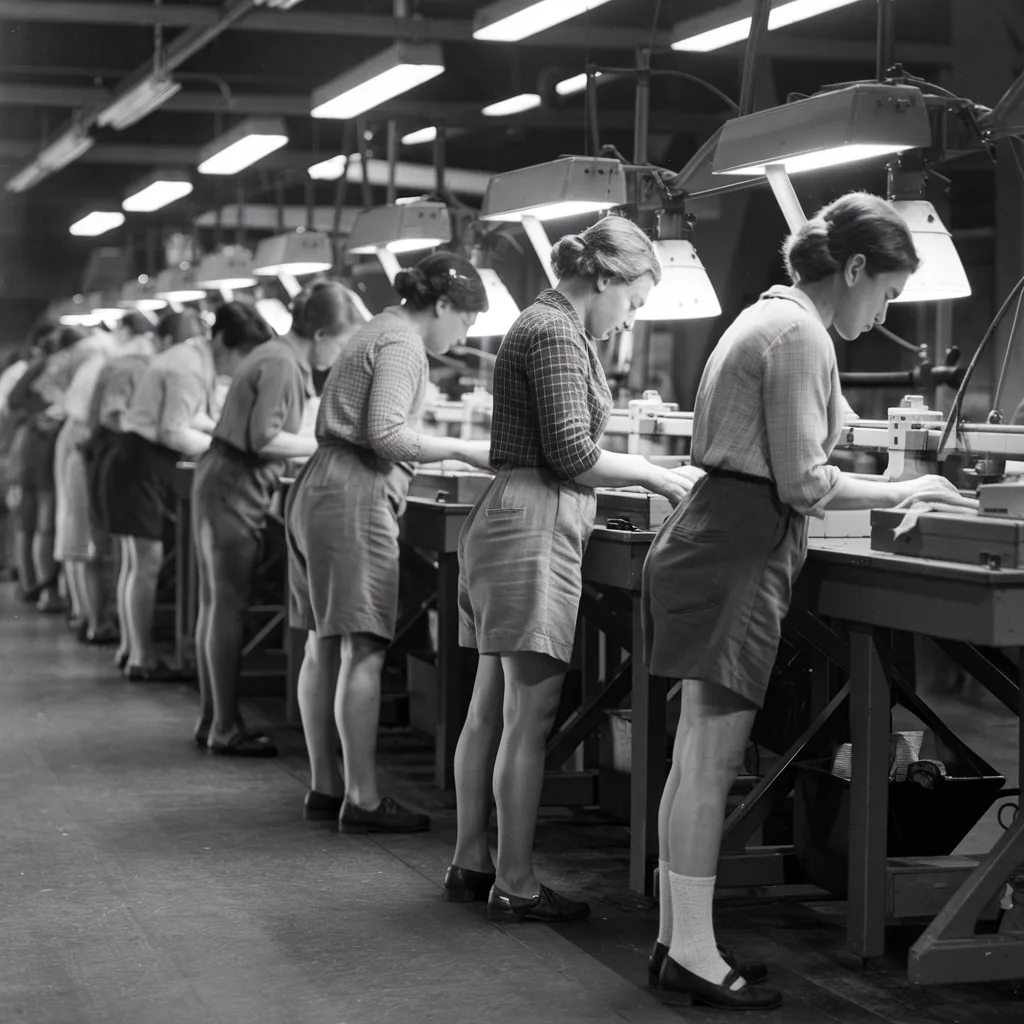
Even though business clothing has eased significantly in recent years, it remains a very famous shot.
Surfing USA, 1930
Did you know that before surfing became the cool-dude sport that it is now, it was considered a goofy or questionable pursuit? That makes this shot of six young women carrying their surfboards before heading out to catch some waves in Southern California circa 1930 all the more incredible.
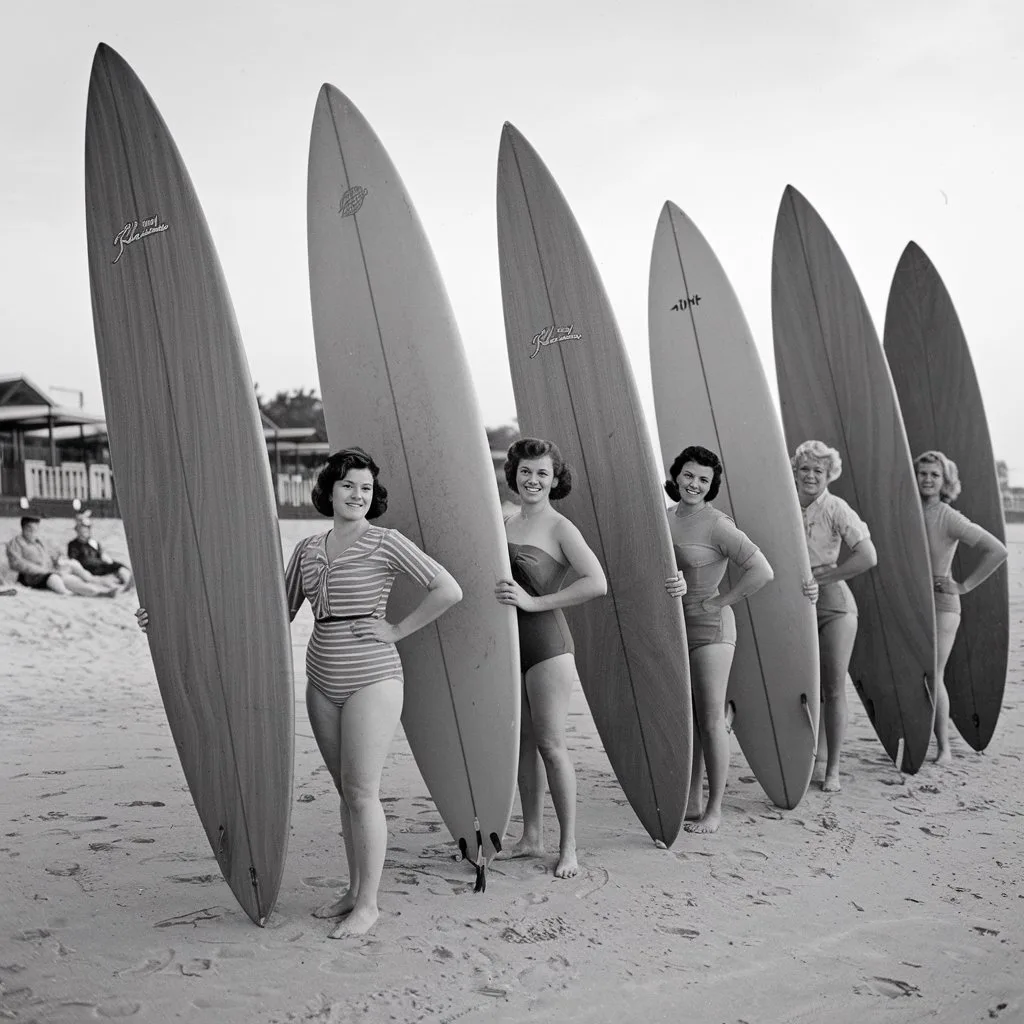
These days, you might find a group of enthusiastic surfers gathered on the beach, but they wouldn’t be wearing this great vintage style.
Testing a Bulletproof Vest, 1923
Would you dare to try a bulletproof vest? We are confident we would not be! In this bold live demonstration inside the Washington City Police Headquarters, WH Murphy puts a new bulletproof vest to the ultimate test. Murphy braced himself as he stood less than 10 feet away from an officer wielding a S&W Model 10 handgun.38-caliber shots were fired directly at his chest.
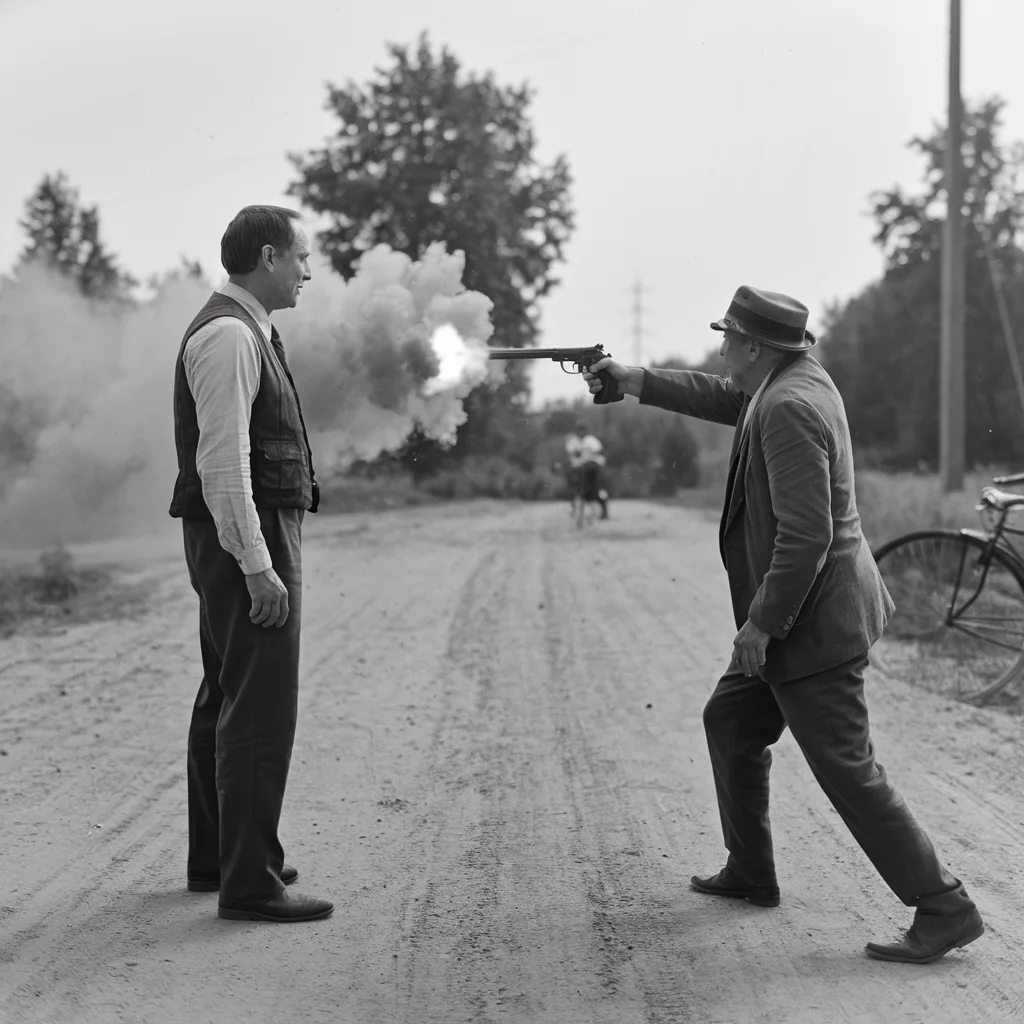
Surprisingly, he endured both hits without flinching, dazzling everyone there, including Frederick County Police Department officials. This hazardous stunt was intended to demonstrate the vest’s lifesaving capabilities. It surely made an impression!
Penny Edwards Wearing a Barrel, 1945
This legendary photograph depicts Broadway theater diva Penny Edwards walking down a New York City street wearing nothing but a barrel!
The barrel bears the sign, “I did my bit, did you?” Edwards had donated the clothes she was wearing to the United National Clothing Drive, which collected clothing for Europe’s war-torn population.
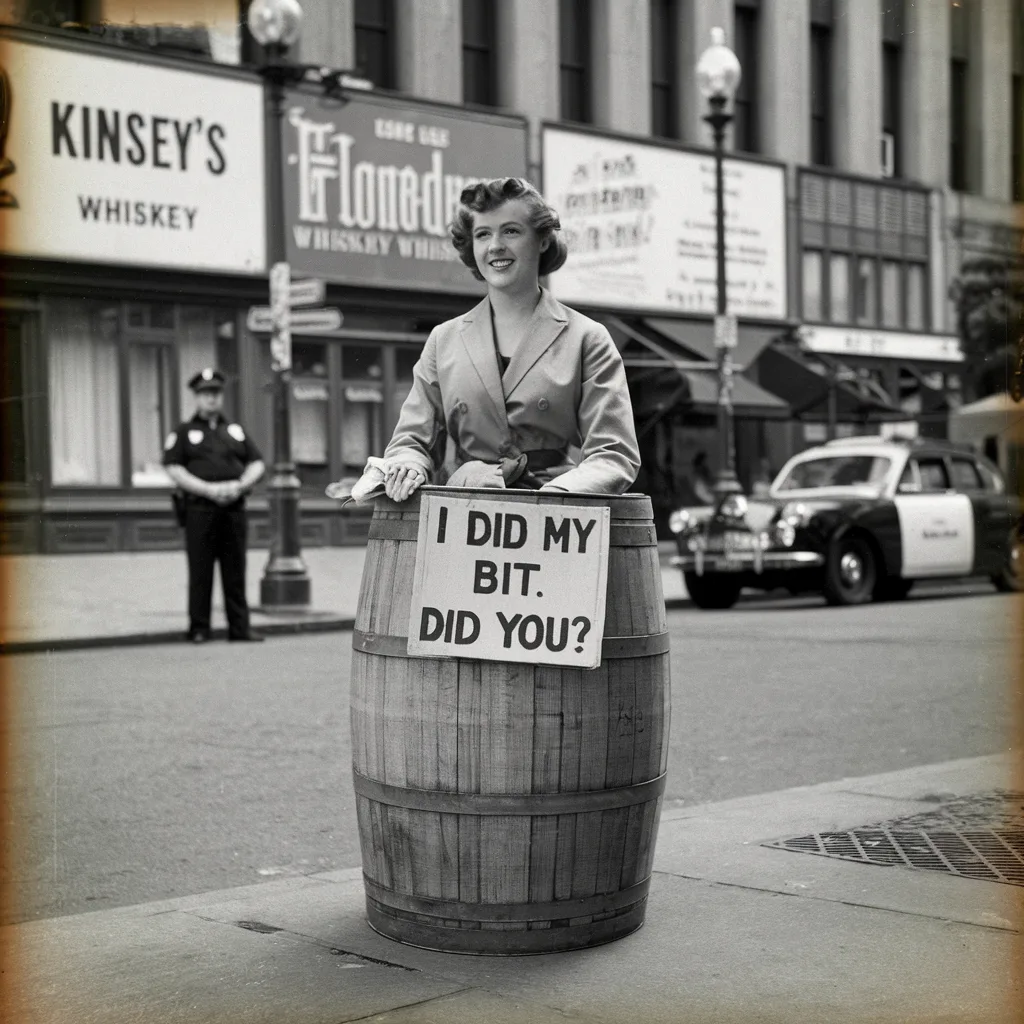
Along with Edwards, many celebrities and showbiz legends participated in this wonderful endeavor. What a feat of fashion and kindness!
Armenian Woman Tattooed in Aleppo, 1920s
Did you know that during the Armenian Genocide, many women were forcibly tattooed, often on their faces? The Armenian Genocide was a systematic slaughter of 1.5 million Armenians by the Ottoman Empire during World War I, motivated by religious, political, and ethnic considerations.
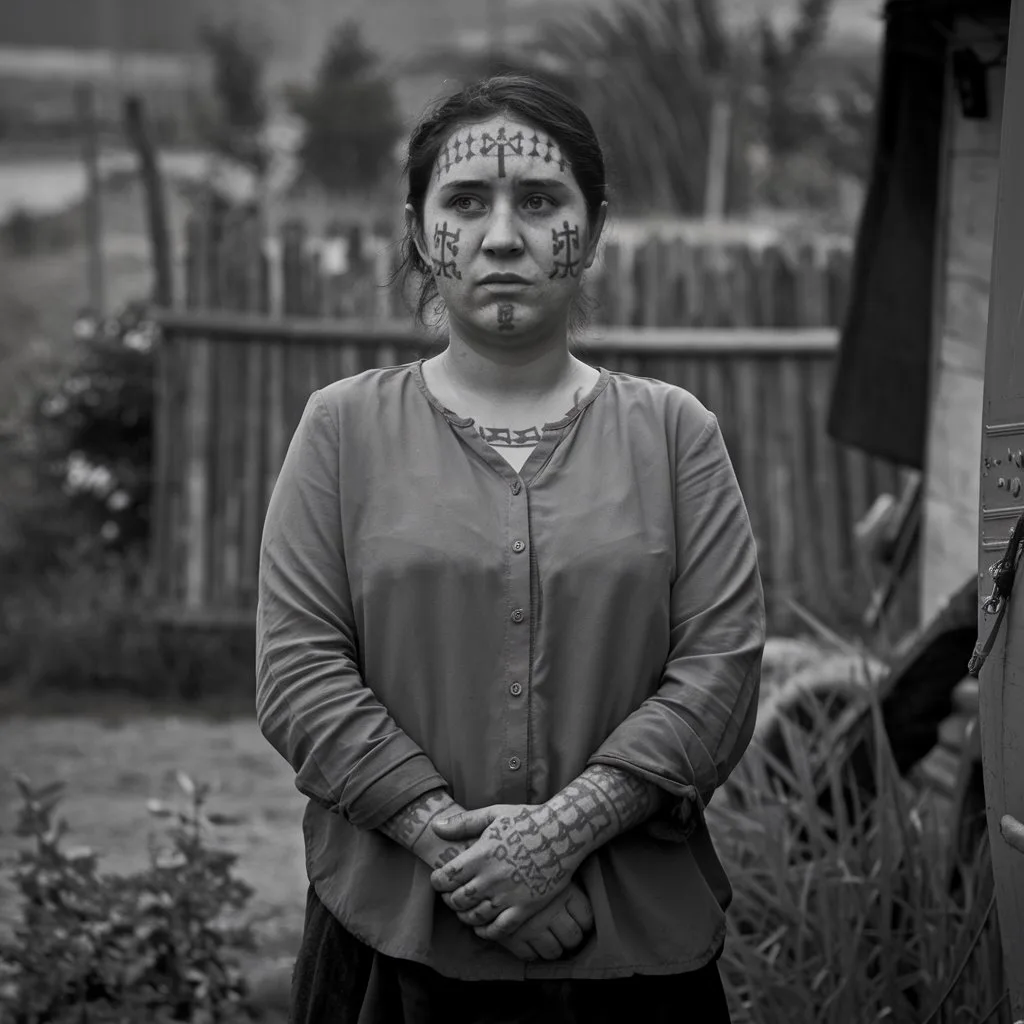
Armenians were imprisoned under the Young Turks’ reign, and tribal tattoos on their faces and bodies represented absorption into Muslim Bedouin and Kurdish households. This woman embodies a profound emblem of lived suffering and survival.
Titanic’s Lifeboat D, 1912
The sinking of the Titanic has become an iconic event in history, with survivors tasked with telling its horrific story. Fortunately, Collapsible Lifeboat D was one of the few that got people to safety as the ship sank.
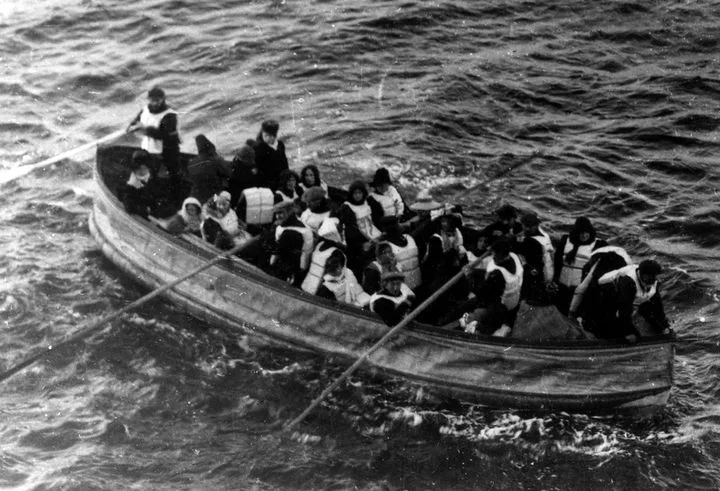
It was the final lifeboat to be deployed, as the others had been destroyed or washed away. Lifeboat D held approximately 60 passengers, and this photograph shows the terrible moment of their escape while floating in the frigid waters. What a shock that must have been for everyone, both on board and those who discovered them.
Bathing Suit Cop, 1922
We can’t image what’s going on on the beach today. As we all know, people today are free to do and wear whatever they want, with no one police dress codes or modesty requirements.

However, in 1922, a man named Bill Norton became known as the “Bathing Beach Cop” after going around measuring the distance between women’s knees and the bottoms of their bathing suits. Can you picture someone checking it right now? They’d need very long tape measures!
Painting The Eiffel Tower, 1932
It seems like people back in the day wanted to prove they could cheat death—at least, that’s what it looks like when you see the workers painting the Eiffel Tower with limited safety equipment.
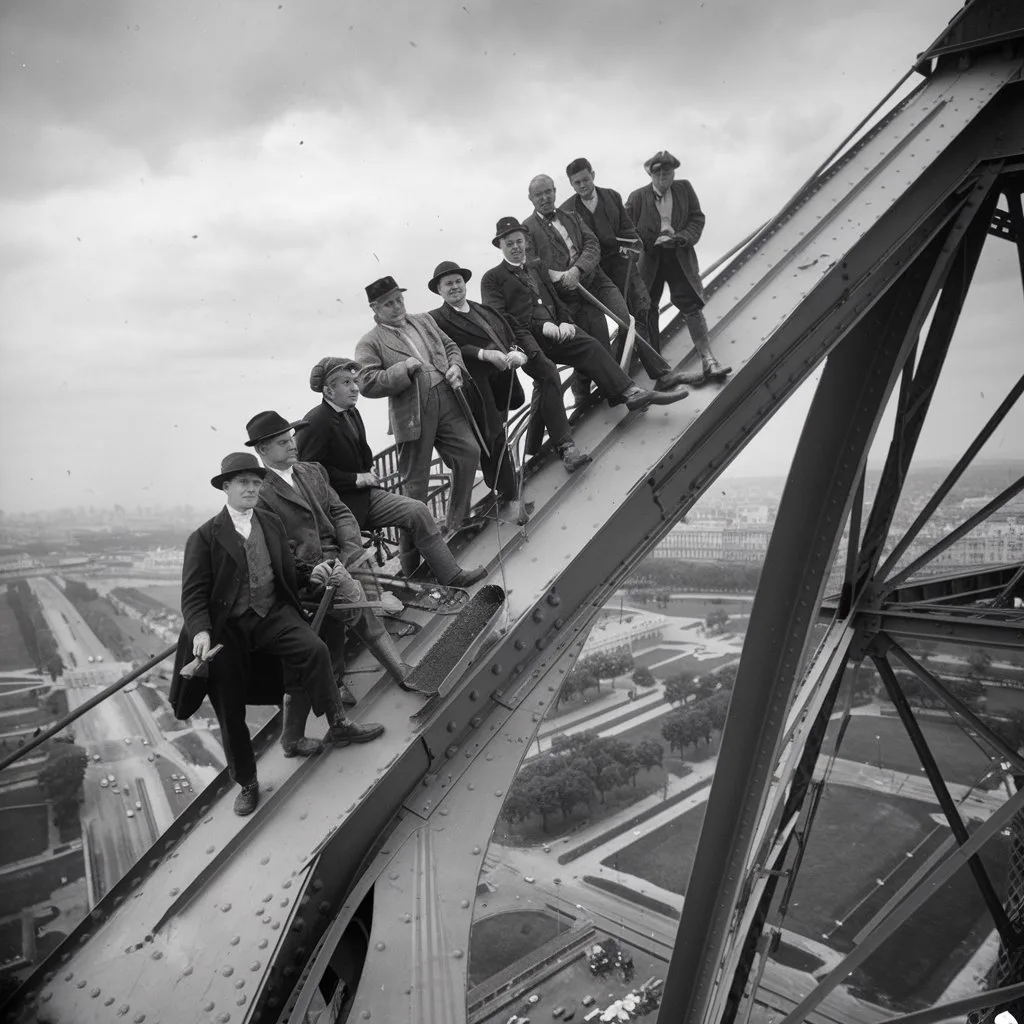
Despite the risky business, the tower needed to be maintained every seven years, which required over 60 tons of paint to keep it looking crisp. Given how frequently this task had to be repeated, they hoped to finally devise some better safety precautions.
The MGM Lion
The history of the MGM Lion is an interesting one! Pictured here is Jackie, the second MGM lion, in the studio in 1928.
Since 1917, there have been 11 different lions used for the MGM logo.
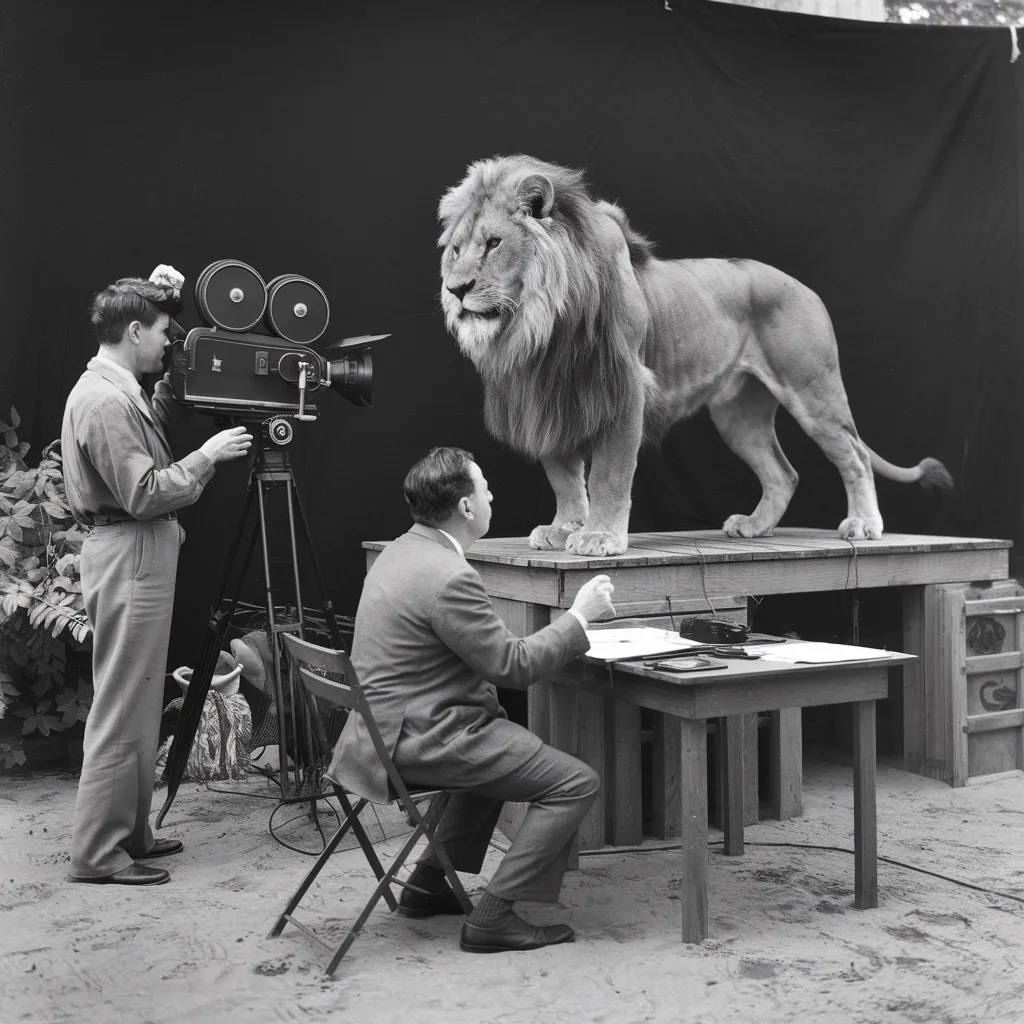
Despite that, MGM refers to all of the lions used in their trademark as “Leo the Lion” — although the only lion named “Leo”
Army Girls, 1932
These military maidens may appear to be dressed up for a day of fun and frolic by the sea, but they are participating in a very good cause. This photograph was taken in 1932 during the Army Relief Fete. This was a special event to collect funds for the military and boost the United States forces.
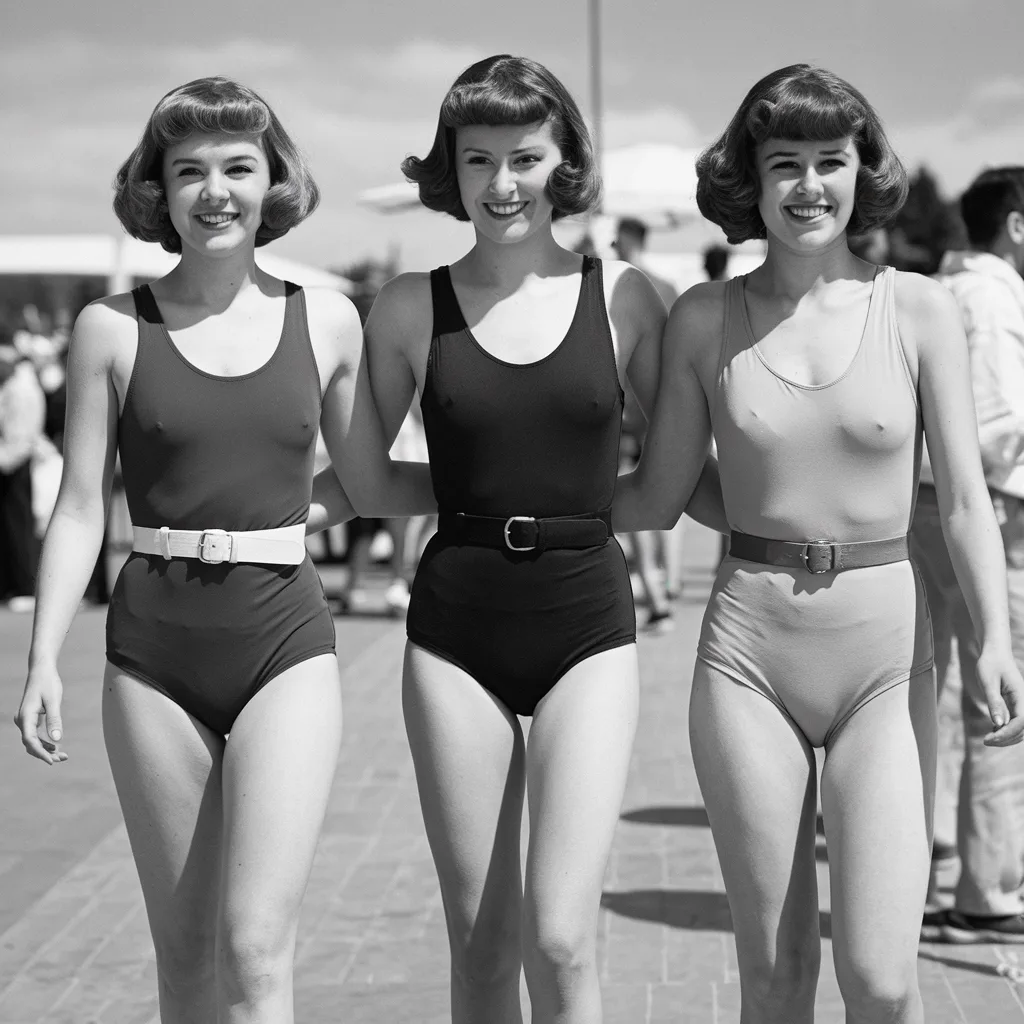
These females may be seen preparing to participate in the event, which took place at the Army, Navy, and Marine Corps Country Club in Washington, DC.
Children For Sale, 1948
This disturbing photograph stopped us in our tracks! It depicts the heartbreaking decision of Mr. and Mrs. Ray Chalifoux during the Great Depression. With a “For Sale” sign in front of their Chicago house, the unemployed coal truck driver and his wife faced eviction and believed they had no choice but to sell their four children.
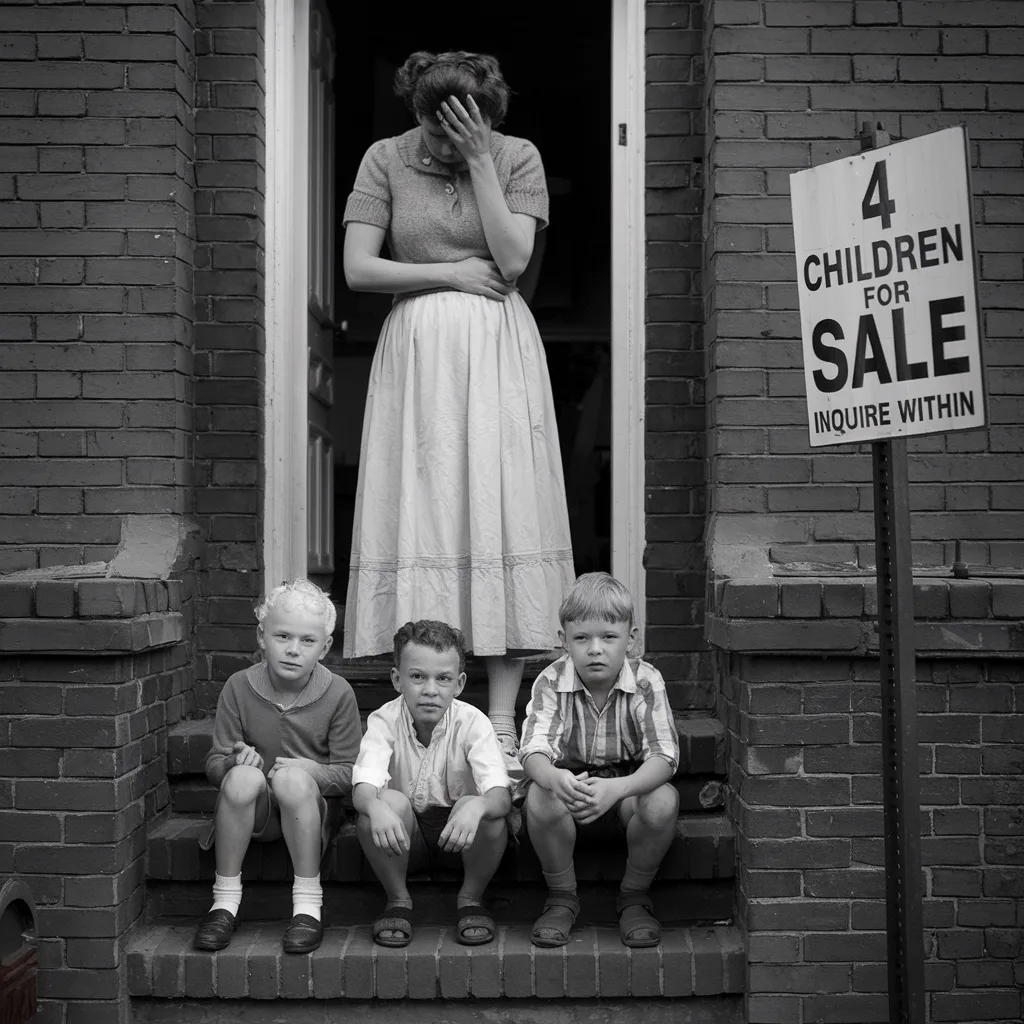
The mother is facing away from the camera, while her small children appear bewildered and unconcerned by the dangerous scenario. While it’s hard to look at, we can only imagine how difficult it was to put up that sign.
Fashion Models, 1954
Look at this stunning exhibition of style! This appears to be an artist’s sketch or a lovely painting, but it is a photograph from 1954. This breathtaking photo depicts current models—Marla Scarafia, Pat Goldsworthy, Ann Farrar, and June Hatfield—strutting down a street in New York City, looking incredibly smart and cool.
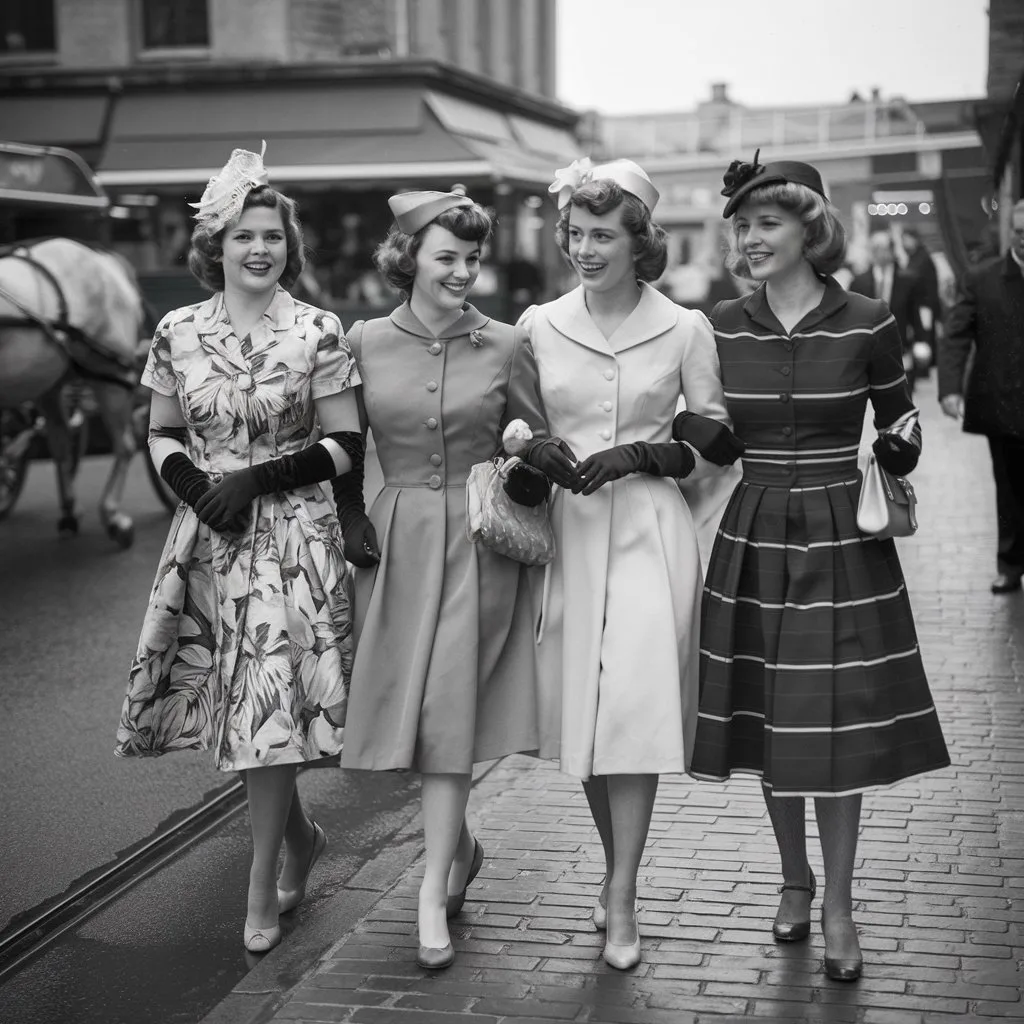
Move over, Carrie and friends—these ladies had the Big Apple in the palm of their hands long before the TV show—and had a sense of style that no one has ever been able to replicate since.
Giant Checkers Board, 1930
What an iconic photo we have here. This shot features iconic 1930s stars Charles Ray and Lillian Bond. Charles Ray was well-known for his parts in several successful films, while Lillian Bond rose to prominence in the musical comedy circuit.
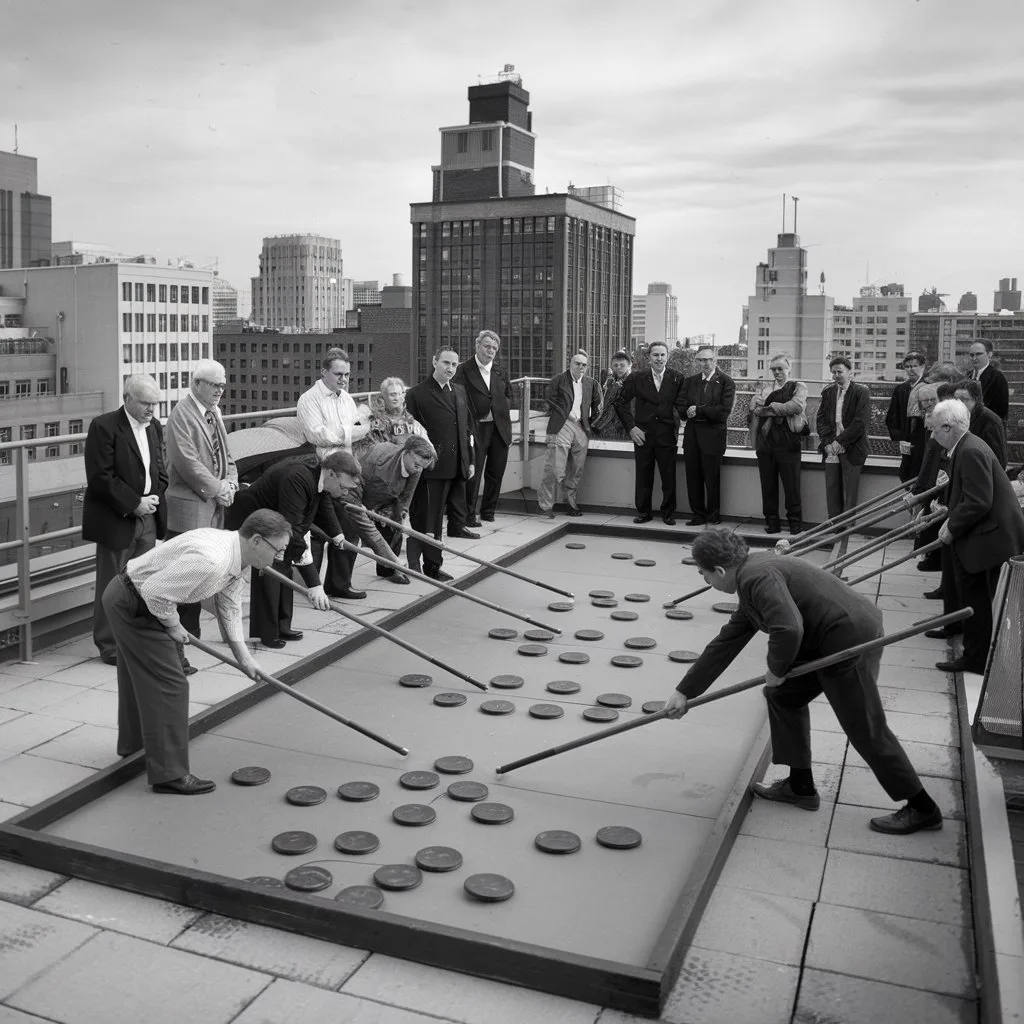
They are playing checkers on a large outdoor board atop the Hotel Governor Clinton. And if that wasn’t enough, the game will be refereed by legendary composer Ted Barorn! Talk about rubbing shoulders with the elite!
The Montparnasse Train Wreck, 1895
As if we needed any more reasons to be terrified of public transit. In 1895, the Granville-Paris Express derailed at Paris’s Gare Montparnasse, causing a major train tragedy. The train was running late and couldn’t make up time due to malfunctioning brakes and an inadequate air brake system.
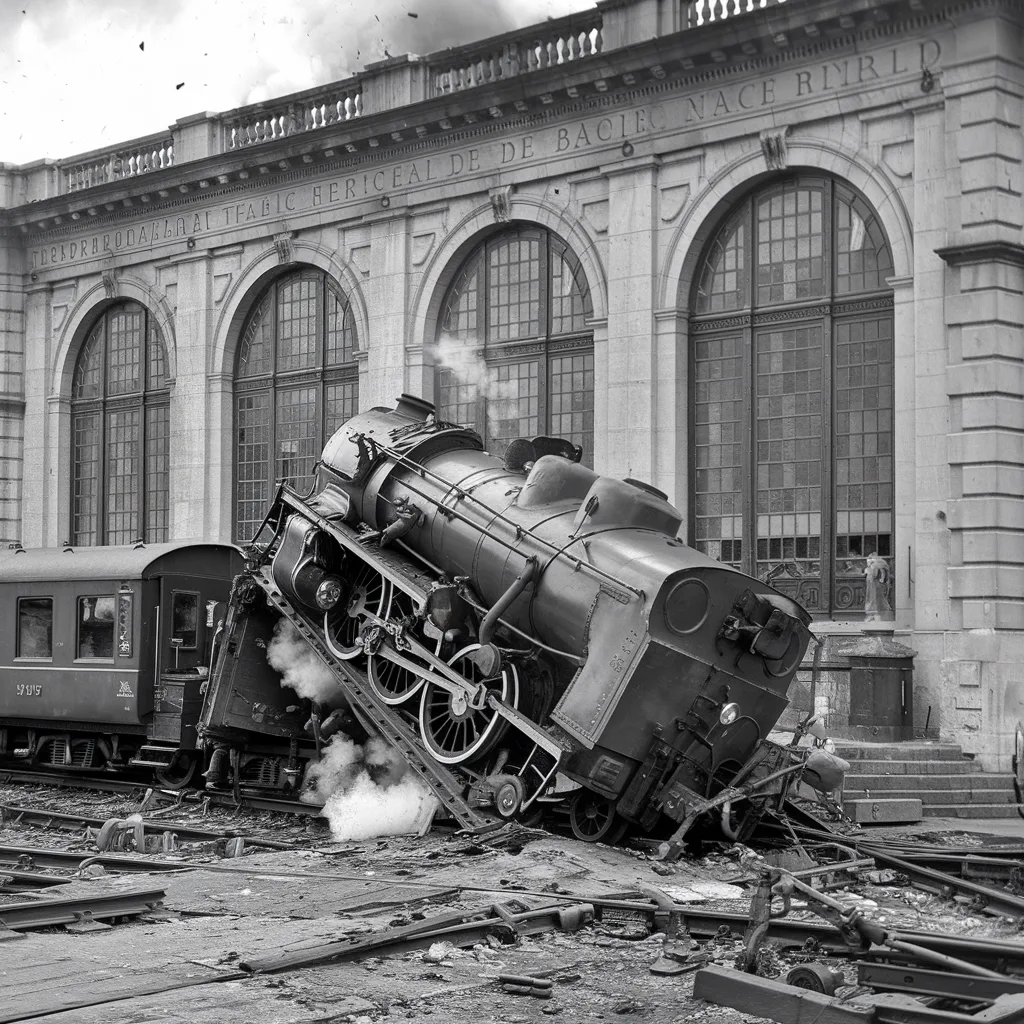
The train sped through the station’s buffer stop, across the concourse, and through the station wall before landing on Place de Rennes below. Unfortunately, a woman was killed by falling debris. The wreck remains one of the most memorable and tragic events in rail history.
Beach Beauties, 1924
This picture was taken around 1924 and perfectly depicts the old-school seashore styles that were highly popular in the U.S. at that time. Just look at those classic lines and exquisite sophisticated styles displayed in this variety of what in those days was the acme of high-fashion swimwear.
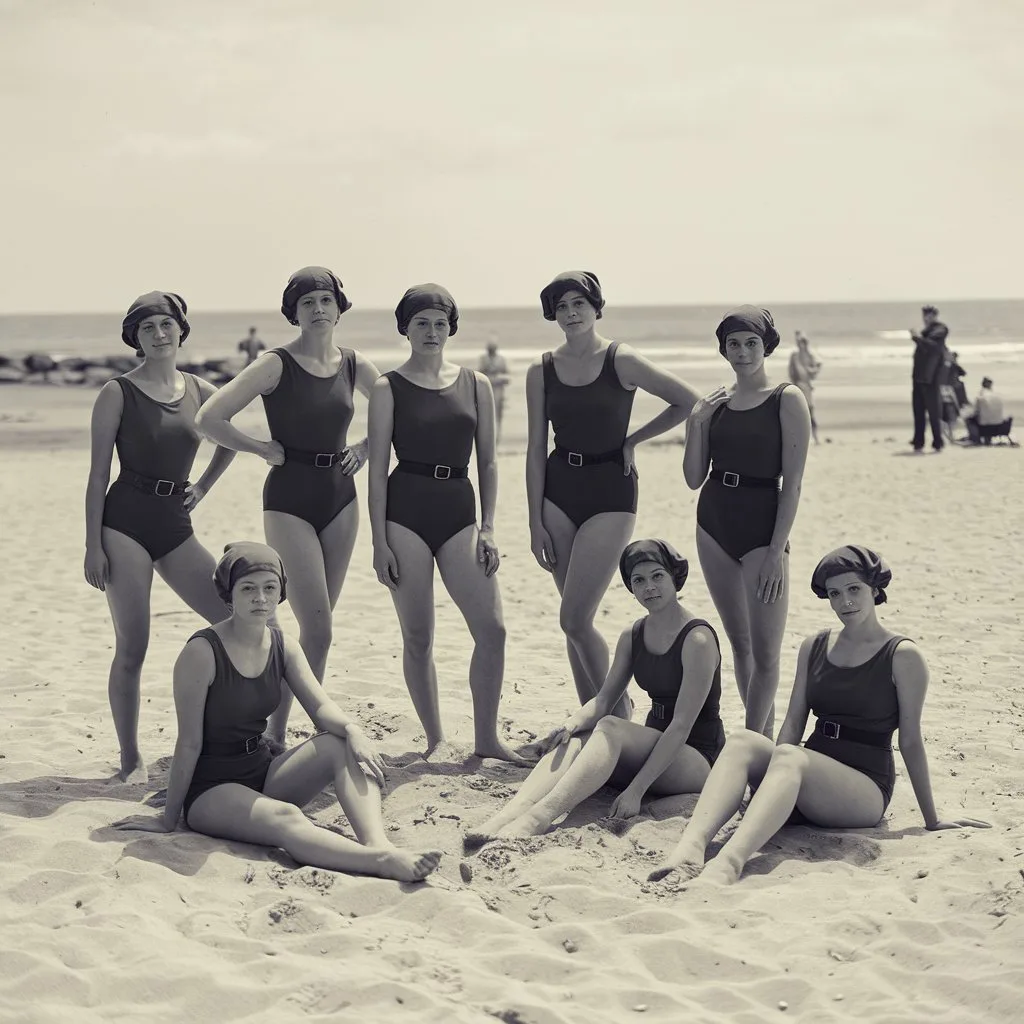
Bathing suits like this are rarely seen nowadays, except for athletic events or aquatic sports training. We’re not sure why—it’s a strong look!
The Empire State Building, 1941
This may appear to be an image from a sci-fi movie from the 1950s, but it is the Empire State Building in 1941.
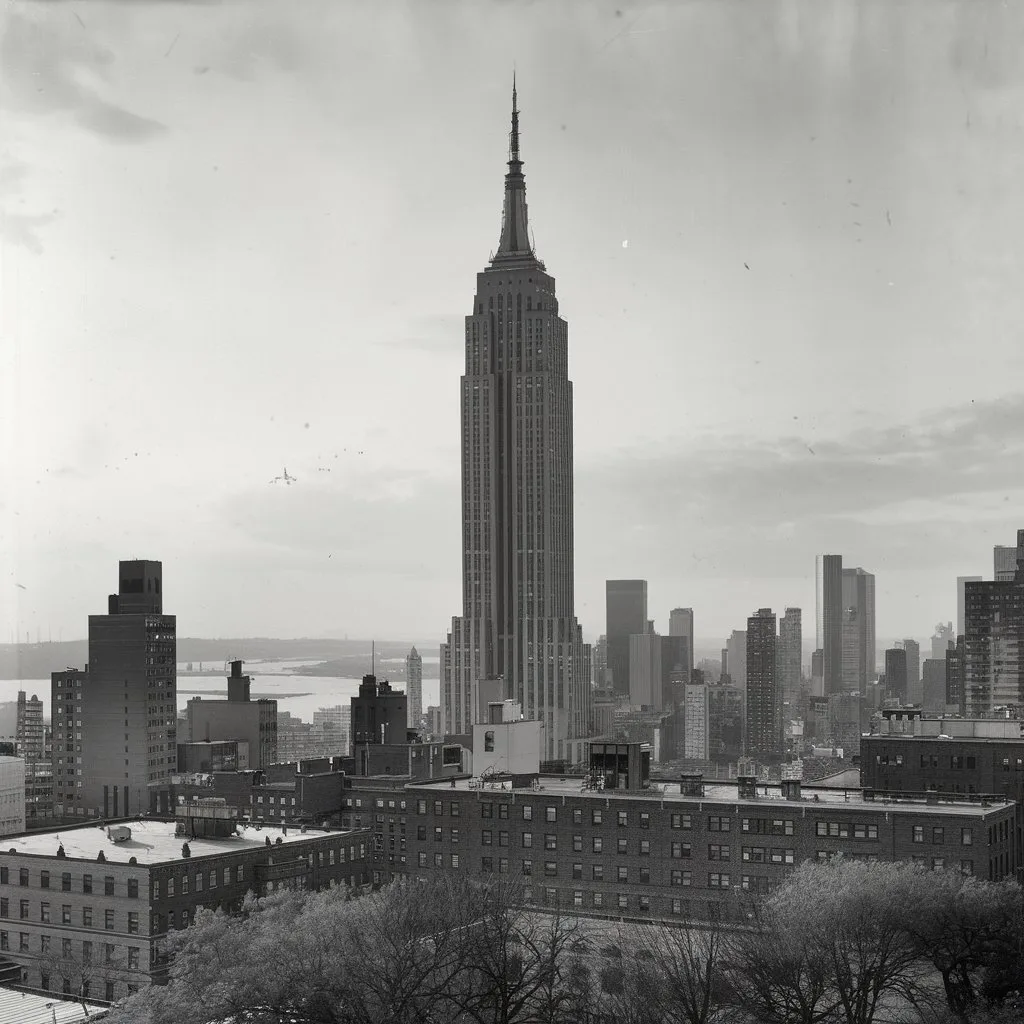
Before New York City became known for its skyscrapers, the average building was only a few stories tall. When the Empire State Building was constructed, it appeared enormous compared to the rest of the city. It’s no surprise that visitors traveled to the city merely to see the massive renowned structure.
Princess Elizabeth and Lieutenant Philip Mountbatten
This stunning snapshot shows Queen Elizabeth II when she was Princess Elizabeth. She is standing close to Prince Philip Duke of Edinburgh, who was previously known as Lieutenant Philip Mountbatten. The pair is posing for an official portrait after their marriage. The wedding took place on November 20, 1947, at Westminster Abbey. This rare snapshot reveals how stunning the royal princess was in her youth. The newlyweds look stunning on their royal wedding day.
